Fathers of the Church Series (127 vols.)
Digital Logos Edition
For the most up to date version of this collection, see here.
Overview
The rich Christian heritage of East and West comes alive in the volumes of The Fathers of the Church, a series widely praised for its brilliant scholarship and unparalleled historical, literary, and theological significance. The series consists of now 127 published volumes, representing the longest modern run of translated church fathers on the market.
Spanning the first five centuries of Christian history, many of these ancient works had never been accessible in English before these publications—and many are still inaccessible outside of these editions. Containing hard-to-find writings from early church fathers such as Cyprian, Jerome, Basil, Ambrose, Peter Chrysologus, and many more, these volumes provide the best scholarship in translation and early church history, making these works not only delightful to read, but unmatched in patristic work.
- Dozens of writings of early church fathers from the first century to the fifth
- The quintessential theological and personal writings of early Christianity
- Reputable and accessible translations for a wide audience
- Introductions to every writing, providing background on both the author and the era
- Title: The Fathers of the Church Series
- Series: Fathers of the Church
- Publisher: Catholic University of America Press
- Volumes: 127
- Pages: 46,063
This title is included in the following collections
You can save when you purchase this product as part of a collection.
Logos 8 Orthodox Diamond Legac...
$2,999.99$2,099.99Logos 9 Orthodox Diamond Legac...
$2,999.99$2,099.99Verbum 9 Diamond Legacy Librar...
$2,999.99$2,099.992025 Verbum Diamond Library
$2,999.99$2,099.99
- $2,999.99$2,099.99
- $4,749.99$3,324.99
- $4,749.99$3,324.99
- $4,749.99$3,324.99
- $4,749.99$3,324.99
- $4,749.99$3,324.99
- $4,749.99$3,324.99
- $4,749.99$3,324.99
- $4,749.99$3,324.99
- $4,749.99$3,324.99
- $4,749.99$3,324.99
- $3,434.99
- $3,730.99
- $3,999.99
- $4,749.99
- $4,749.99
- $4,749.99
- $7,749.99$5,424.99
- $7,749.99$5,424.99
- $6,399.99$5,439.99
- $5,999.99
- $5,999.99
- $11,399.99$7,979.99
- $11,399.99$7,979.99
- $11,399.99$7,979.99
- $11,399.99$7,979.99
- $11,377.57$8,499.99
- $12,989.68$10,391.74
- $10,999.99
- $21,749.99$15,224.99
- $24,999.99$17,499.99
- $24,999.99$17,499.99
- $23,999.99
- $23,999.99
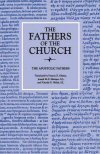
The first volume of the Fathers of the Church series presents the Apostolic Fathers translated into English with introductions setting the background for each writing and the history of its manuscripts. The Apostolic Fathers includes the writings of St. Clement of Rome, St. Ignatius Antioch, St. Polycarp, the Didache, the Letter of Barnabas, the Shepherd of Hermas, the Letter to Diognetus, and the Fragments of Papias.
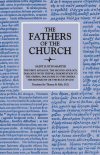
The First Apology, The Second Apology, Dialogue with Trypho, Exhortation to the Greeks, Discourse to the Greeks, The Monarchy of the Rule of God
- Author: Justin Martyr
- Translator: Thomas B. Falls
- Series: Fathers of the Church
- Publisher: Catholic University of America Press
- Publication Date: 1965
- Pages: 486
Justin Martyr, of the early second century AD, was well educated at a young age, and as an adult, pursued the philosophies and intellectual paths of the Greeks in search of the truth that governs the universe. Upon encountering the Christians, Justin quickly converted, finding no other “sure and useful philosophy” as Christianity. Once a Christian, he put all of his energy into spreading the gospel, and continued to engage on philosophical grounds with those he met—of all walks of life. These writings reflect the very first philosophical Christian writings—including the first philosophical exposition of the Logos and the first attempt to reconcile faith and reason.
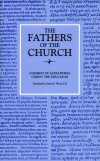
Christ the Educator
- Author: Clement of Alexandria
- Translator: Simon P. Wood
- Series: Fathers of the Church
- Publisher: Catholic University of America Press
- Publication Date: 1954
- Pages: 332
Clement brings us a rich and stimulating study of Christian thought from the second century AD, in which we find a loyal devotion to Christianity, even if he steps outside of the orthodox tradition. In Christ the Educator, Clement sets down general principles of the idea of paidagogos in our relationship with Christ. Christ is our teacher, and we are but little ones sitting at his feet. The Alexandrian inserts his own cultural ideas of education and spirituality into the mix, presenting the concept of Christ as educator in terms appropriate to his audience—terms which are still meaningful today.
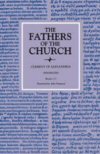
Stromateis, Books 1–3
- Author: Clement of Alexandria
- Translator: John Ferguson
- Series: Fathers of the Church
- Publisher: Catholic University of America Press
- Publication Date: 1991
- Pages: 368
Titus Flavius Clemens Alexandrinus (ca. AD 150–215) wrote the Stromateis, possibly the third work in his trilogy—the Protrepticus, the Paedagogus, and the Stromateis—to direct Christian Gnostics toward the third stage of philosophy—gnosis. For Clement, the only true gnosis was that which presupposed the faith of the Church, that is, apostolic and divinely revealed. But for Clement, the ideas of Greek philosophy were also a divine gift to mankind. All of his writings reflect this reconciliation of faith and knowledge.
The full title of the Stromateis is Miscellanies of Notes of Revealed Knowledge in Accordance with the True Philosophy, and the word stromateis itself means a kind of patchwork quilt. Clement describes the work as a somewhat unorganized collection of flowers or trees that have grown together naturally. Of the eight books some are fragmented or incomplete, but all show Clement as philosopher, theologian, and biblical commentator.
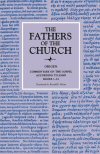
Commentary on the Gospel According to John, Books 1–10
- Author: Origen
- Translator: Ronald E. Heine
- Series: Fathers of the Church
- Publisher: Catholic University of America Press
- Publication Date: 1989
- Pages: 355
Origen composed at least 32 books of a commentary on the Gospel according to John, at the request of St. Ambrose of Milan. Of these, only nine books are extant in almost complete form, although we have selections of others persevered in other collections of the works of Origen. The commentary proceeds verse by verse, and is particularly notable for its emphasis on the spiritual meaning of the Gospel.
This volume contains books 1, 2, 6, and 10, and fragments of books 4 and 5. Origen’s main interest is the allegorical interpretation of the Gospel according to John, which makes this an important work in the study of Origen's mystical thought. A secondary interest is the refutation of Valentinian gnosticism. According to Eusebius, Ambrose had been a Valentinian before his conversion by Origen, and Origen refers to the Gnostic writer Heracleon regularly throughout the commentary in order to refute his views.
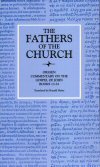
Commentary on the Gospel According to John, Books 13–32
- Author: Origen
- Translator: Ronald E. Heine
- Series: Fathers of the Church
- Publisher: Catholic University of America Press
- Publication Date: 1993
- Pages: 448
This volume contains what remains of Books 13–32 of Origen’s Commentary on the Gospel according to John, and thus completes the publication of the first full English translation of this work that stands as the beginning of Christian scriptural exegesis. Ronald Heine introduces his translation with a discussion of the times and circumstances within which the commentary was composed. He also provides a survey of the major theological questions with which the commentary is concerned. These include Origen’s thought on the nature of God, the person and work of Christ, his relation to the Father and to the created order, his teaching on the Holy Spirit, the Resurrection, and eschatology, and his ideas on the devil.
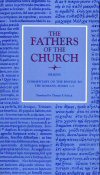
Commentary on the Epistle to the Romans, Books 1–5
- Author: Origen
- Translator: Thomas P. Scheck
- Series: Fathers of the Church
- Publisher: Catholic University of America Press
- Publication Date: 2001
- Pages: 424
Origen of Alexandria’s Commentary on the Epistle to the Romans is the oldest extant commentary on Romans (ca. 246). This volume presents the first English translation of the commentary, covering his exegesis of Rom 1:1 to 6:11. One of his longest and most mature works, it is the only commentary of Origen available in a coherent form from beginning to end. The work was originally composed in Greek in Caesarea, but only fragments of the archetype have survived. Fortunately, Origen’s admirer Rufinus of Aquileia translated the work into Latin (ca. 406).
Origen’s exegesis predates the controversy between Augustine and Pelagius by 170 years; thus it offers a striking perspective on Romans. Opposition to Gnostic interpretations of Paul is an important characteristic of the commentary. Above all Origen defends the Church against the “doctrine of natures”—the belief that all human beings are born with unalterable natures, either good or evil, and thus bound for either salvation or damnation, and that their conduct during this life cannot alter their destiny. Origen successfully refutes this teaching, showing that freedom of will always abides in rational beings.
Provoked by Marcion’s repudiation of the Old Testament, Origen emphasizes the harmony between Gospel and Law. He highlights as one of Paul’s main themes in Romans the transfer of religion from Judaism to Christianity, from the letter to the spirit, in terms both of salvation history and of the transformation of the individual. Origen claims that the key to unlocking Romans is understanding Paul's use of homonyms—identical expressions such as law, Jew, circumcision, death, etc., with divergent meanings.
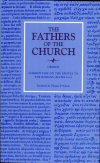
Commentary on the Epistle to the Romans, Books 6–10
- Author: Origen
- Translator: Thomas P. Scheck
- Series: Fathers of the Church
- Publisher: Catholic University of America Press
- Publication Date: 2002
- Pages: 340
This volume completes the first English translation of Rufinus’s Latin version of Origen of Alexandria’s Commentary on the Epistle to the Romans and contains Origen’s detailed exegesis of Romans 6:12–16:27. Origen’s much neglected Commentary, which stands out in splendid isolation at the fountainhead of Greek and Latin exegesis, is now completely accessible to English readers.
In Books 6–10, Origen carries through to completion his program, begun in Books 1–5, of defending human freedom and of opposing the natural predestinarian doctrine of the sects founded by the Gnostic heretics Marcion, Valentinus, and Basilides. These schools relied heavily on texts from Paul, interpreted in isolation from the rest of Scripture, not only to deny free will but to support the doctrine that salvation is determined by the nature one receives at birth, whether good or evil. In contrast Origen clarifies passages in Romans by citations from Paul’s other letters, from the Gospels, and from the Old Testament. He attempts to construct a coherent and unified “biblical theology.” Origen views human beings as chosen or rejected by God deservedly; everyone has it within his own power whether he becomes a servant of God or of sin, a vessel of wrath or of mercy.
Whether one sympathizes with Origen’s interpretations or finds them infuriating, it is difficult not to admire his concordance-like mind at work as he tackles the apostle Paul’s greatest epistle. Readers will find interesting and thought-provoking discussions of all the important theological themes and terms of Romans: faith, hope, love, works, justification, election, law, Israel, Gentiles, Church, sin, death, flesh, body, glory, etc. The importance of these discussions is magnified by the fact that they stand alone in their detail and breadth and stem from the Church’s most important theologian of the third century. Moreover, because Origen’s work was productive in subsequent centuries in Rufinus’s Latin translation, the Commentary is of outstanding importance for the history of New Testament exegesis.
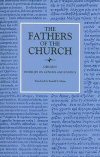
Homilies on Genesis and Exodus
- Author: Origen
- Translator: Robert E. Heine
- Series: Fathers of the Church
- Publisher: Catholic University of America Press
- Publication Date: 1982
- Pages: 434
Origen, son of the martyr Leonides, oldest in a family of seven children was born probably at Alexandria 184/85 and died probably in Tyre 253/54 after imprisonment and torture during the Decian persecution. Surnamed “man of steel,” Origen was an outstanding theologian of the early Greek-speaking Church, a man of the virtue and a genius with a prodigious capacity for work, an excellent teacher to whose lectures students flocked “and did not give him time to breathe for one bath of pupils after another kept frequenting from morn till night his lecture-room” (Eusebius, H.E. 6, 15).
As an author Origen surpasses all the writers of the Early Church in literary output. A list complied by Eusebius, now unfortunately lost, credited Origen with some 2000 books. Even a far shorter list known to St. Jerome and mentioned by him in his Letter To Paula giving the number of 786 works is still impressive. Jerome then goes on to add some reflections. “Do you see the Greeks and Latins outstripped by the work of one man? Who could ever read all that he wrote? What reward did he receive for this exertion? He is condemned by bishop Demetrius; except for the bishops of Palestine, Arabia, Phoenicia and Achaia the world concurs in his condemnation. Rome itself convokes an assembly against this man not because of novelty of teachings, not because of heresy as now mad dogs pretend against him, but because they could not bear the fame of his eloquence and learning and were considered speechless when he spoke.”

Homilies on Leviticus, 1–16
- Author: Origen
- Translator: Gary Wayne Barkley
- Series: Fathers of the Church
- Publisher: Catholic University of America Press
- Publication Date: 1990
- Pages: 312
This new translation of Origen’s Homilies on Leviticus may be read as a companion to Ronald E. Heine’s translation of Origen’s Homilies on Genesis and Exodus, volume 71 in the Fathers of the Church series. Both volumes reveal Origen’s tenacious belief that, although the meaning of Scripture was threefold, that is, literal, moral, and spiritual, the most important interpretation was the spiritual.
The Homilies on Leviticus were delivered during a three-year cycle between 238 and 244 in Alexandria where Origen was a brilliant teacher, theologian, churchman, and exegete until his imprisonment and torture under Decian and his reluctant death in Tyre in 253/254. They were translated by Rufinus, who admitted to having changed the text by condensing the homilies and, at the same time, expanding some of the explanations. Nevertheless they provide valuable insights on the third-century Church, touching on topics of conversion from sin, works of piety, baptism, Lent and fasting, the ordination of a priest, and the process of Christian discipline. Perhaps Origen’s most significant theological contribution, however, is his doctrine of the Trinity which influenced the Trinitarian debates of the fourth and fifth centuries.
Origen was the most prolific writer of the Early Church. Eusebius numbers his books at 2000, and St. Jerome writes of 786 works. But Origen’s chief aim, as an interpreter of the Scriptures, was to draw out the historical meaning of the text and communicate that wisdom of perception to his flock. It was this that inspired his profound spiritual interpretation in the Homilies on Leviticus so finely translated in this volume.
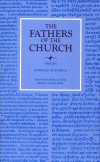
Homilies on Joshua
- Authors: Origen
- Translator: Barbara J. Bruce
- Series: Fathers of the Church
- Publisher: Catholic University of America Press
- Publication Date: 2002
- Pages: 240
These homilies were among the last Origen gave before his torture and death during the Decian persecution, around 254.
With the saga of the Israelites entering and possessing their promised land, Origen unfolds the story of the Christian life from baptism to resurrection. He exhorts his hearers to persevere in their own struggles to overcome the enemies of their souls and obtain their own inheritance. Their leader is Jesus, the Son of God, who is prefigured in Jesus (Joshua), the son of Nun. All battles, victories, and defeats happen within the individual; all aspects of the Law and temple become but shadows of the fulfilling work of God in Jesus Christ. The story brims with allegory and passion, a passion for the people and for their priests who, “standing near the blazing fire of the altar,” must illuminate the path for others.
As Origen exhorted, others wrote down his words, words he had asked the people to pray for and the Spirit to supply. Most of the original writings in Greek were lost during the centuries when Origen was officially defamed. What we have today is the Latin translation by Rufinus, the basis of the translation in this volume. In the Introduction, Barbara J. Bruce discusses and affirms the reliability of the Latin text, and briefly looks at Origen’s ministry, his concept of the nature of Scripture, and his method of interpretation.
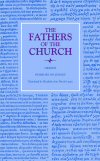
Homilies on Judges
- Author: Origen
- Translator: Elizabeth Ann Dively Lauro
- Series: Fathers of the Church
- Publisher: Catholic University of America Press
- Publication Date: 2009
- Pages: 152
In his General Audience of May 2, 2007, Pope Benedict XVI praised Origen for his “primordial role” in the history of lectio divina, the prayerful reading of Scripture. He explained that Origen approaches Scripture reading not as “mere study” but as the pathway to knowing Christ and “falling in love with him.” Origen’s nine extant homilies on Judges exemplify this approach.
In them, Origen calls his audience to participate in a loving relationship with Christ through interaction with Scripture. Delivered sometime between 238 and 248, these homilies expound on themes extracted from Judges 2–7. Some of the homilies focus generally on God’s redemption of Israel through judges after each cycle of sin, enslavement, and repentance, while others stress that victory belongs to God alone through events such as the defeat of the Midianites by Gideon’s meager army of 300 men, Gideon’s test with the fleece, and the murder of the Philistine general Sisera by the woman Jael. The homilies brim with hope in Christ’s ultimate victory over sin and death, a hope that is specific to the individual believer but accessible only within the Church.
Origen applies his allegorical method of Scriptural interpretation to these passages, sometimes drawing faith-enriching meaning from the literal (somatic) sense as well as from one or both of the two figurative (psychic and pneumatic) senses. Using both allegory and typology, Origen shows his audience God’s abundant mercy and grace, the power of Scripture to assist in the battle against sin and the promotion of virtue, and the church leader’s duty to walk his flock through the transforming terrain of Scripture toward likeness to and union with Christ.
Largely because of early controversies over Origen’s legacy, these homilies are extant only in Rufinus’s fourth-century Latin translation, but his ability to capture Origen’s meaning and spirit is well documented. This is the first-ever English translation of Origen’s homilies on Judges.
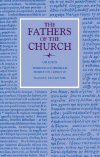
Homilies on Jeremiah and I Kings 28
- Author: Origen
- Translator: John Clark Smith
- Series: Fathers of the Church
- Publisher: Catholic University of America Press
- Publication Date: 1998
- Pages: 379
Souls existing before their bodies, witches summoning dead prophets from the underworld, the return of the damned—and the Devil himself—to God in the end, and many other theological speculations surprise the reader of Origen’s Homilies on Jeremiah and I Kings 28. Some of these very theses of the third-century priest from Alexandria, Egypt, were condemned in the Second Council of Constantinople. But plumbing the mystical depths of the Prophecy of Jeremiah is the central point of the homilies.
Presented in this volume are the remains of 22 homilies and a collection of fragments delivered by Origen around AD 240. The original texts of the homilies on Jeremiah have not come down to us completely; two of the homilies survive only in a Latin translation of St. Jerome. The homily on I Kings 28, while not a part of the homilies on Jeremiah, deals with the Witch of Endor and has been added to this volume in virtue of its own inherent interest.
In this collection, Origen seeks understanding of the significance of the hostility of the Chosen People towards the Prophet Jeremiah before their captivity in Babylon. Origen in many ways identified with the great prophet and thought of Jeremiah as a type for Christ in the Hebrew Scriptures. Origen realized that Jeremiah came at a crucial time in the history of Israel, the time of captivity, and he views this event and the events around it as pregnant with meaning for the people of his time.
Watching a master grapple with admittedly difficult, obscure texts and give them compelling, forceful delivery must have impressed Origen’s congregation. Readers will find it no less engaging to read his homilies now and experience some of that exhilaration of hearing a true expert highlight every subtlety of the pericope and make plain what once was obscure.
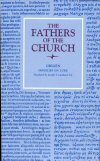
Homilies on Luke
- Author: Origen
- Translator: Joseph T. Lienhard
- Series: Fathers of the Church
- Publisher: Catholic University of America Press
- Publication Date: 1996
- Pages: 285
Thirty-nine of Origen’s homilies on the Gospel of Luke survive in Jerome’s Latin translation. Origen preached them in Caesarea, perhaps around 234 or 240, to a congregation of catechumens and faithful. Most of the homilies are short; on average, they treat about six verses of the Gospel and would have lasted between eight and twelve minutes. The first 33 homilies treat chapters one through four of Luke’s Gospel; the remaining six treat passages from the tenth to the twentieth chapters.
Origen’s homilies are the only extant patristic writing devoted to Luke’s Gospel before Ambrose’s Exposition on Luke, written ca. 390 (and Ambrose himself followed Origen, sometimes quite closely). Homilies 1 to 20 also constitute the only existing commentary from the pre-Nicene Church on either Infancy Narrative. Several hundred fragments of Origen’s homilies and commentary on Luke also survive, mostly in Greek.
Henri de Lubac formulated the important principle, “Observe Origen at work,” and Origen’s writings on Luke’s Gospel are an intriguing place to do that. Origen, the champion of spiritual interpretation, regulary beings with a painfully literal reading of the text. His first unit of understanding is the word, and often the key that unlocks the meaning of a word in the Bible for him is the use of that same word elsewhere in Scripture. Origen assumed that each word had a meaning that is both profound and relevant to the reader—for the Holy Spirit is never trite and what the Holy Spirit says must always touch the hearer.
This volume, the first English translation of the extant homilies and of fragments from the commentary on Luke, is an important addition to the growing body of Origen’s work now available in English.
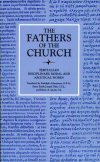
Disciplinary, Moral, and Ascetical Works
- Author: Tertullian
- Translator: Rudolph Arbesmann
- Series: Fathers of the Church
- Publisher: Catholic University of America Press
- Publication Date: 1959
- Pages: 353
Tertullian’s philosophical writings laid the foundation for Latin Christian literature, establishing a standard for doctrinal and practical writings of the ancient church. This volume contains a number of his practical and disciplinary writings, demonstrating his austere devotions and methods of maintaining self-control. He praised the unmarried state of life, condemned the remarriage of divorcees, insisted against the austentatious display of wealth, but was criticized for being misogynistic and taking asceticism too far in some instances. These works include:
- To the Martyrs
- Spectacles
- The Apparel of Women
- Prayer
- Patience
- The Chaplet
- Flight in Time of Persecution
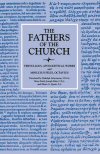
Apologetical Works; Octavius
- Authors: Tertullian and Minucius Felix
- Translator: Rudolph Arbesmann
- Series: Fathers of the Church
- Publisher: Catholic University of America Press
- Publication Date: 1950
- Pages: 449
Tertullian (ca. 150–222 AD) is the father of Latin-language Christian apologetics, and of Latin Christianity as a whole. Known for being the earliest known Latin writer to use the term “Trinity,” Tertullian left an important legacy for the ancient church in Apologeticus, where he proclaimed freedom of religion as an inalienable human right and that Christians should have a fair trial before they are condemned to death. His experience as a lawyer and his extensive training in medicine, law, and culture, provided him the background he needed to defend Christianity and establish a strong foundation for the future of Christian literature and philosophy.
Minucius Felix, another early Latin Christian apologist of unknown date, is exclusively known for his Octavius, a dialogue between the pagan Caecilius Natalis and the Christian Octavius Januarius.
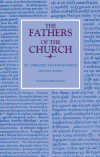
Life and Works
- Author: Gregory Thaumaturgus
- Translator: Michael Slusser
- Series: Fathers of the Church
- Publisher: Catholic University of America Press
- Publication Date: 1998
- Pages: 218
Born of an aristocratic pagan family at Neocaesarea in Pontus at the beginning of the third century, St. Gregory received his early training in literature and rhetoric in his birthplace. While visiting Caesarea in Palestine, he chanced to hear the Christian philosopher and theologian Origen and remained there for five years as his pupil. Deeply influenced by Origen, Gregory returned to Pontus a convinced Christian and became the first bishop of Neocaesarea. His dedication greatly influenced his people, and he became known as “Gregory the Great,” “the Teacher,” or “the Wonderworker.”
St. Gregory’s influence is clear from the many Lives (or narrations) that circulated in the fourth and fifth centuries, the prayers and invocations that asked for his patronage, and his place in Eastern canon law. Of his life, however, not much is known. No manuscript collection of his writings was made in antiquity.
This volume presents the earliest and most important Life of Gregory Thaumaturgus, preached by St. Gregory of Nyssa, and all the works that can be attributed to Gregory Thamumaturgus himself. It includes his Address of Thanksgiving to his teacher Origen; his Christian adaptation and interpretation of the Old Testament book of Ecclesiastes; his regulations restoring order in the Christian community after an invasion by the Goths; a remarkable treatise on God's ability to suffer and another on the Trinity; and two small texts that may or may not have been written by him.
This is the first time that these texts have been brought together in any language. The extensive introduction and notes offer readers an unprecedented opportunity to learn about “the Wonderworker.”
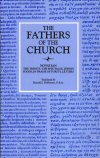
The Trinity, The Spectacles, Jewish Foods, In Praise of Purity, Letters
- Author: Novatian
- Translator: Russell J. DeSimone
- Series: Fathers of the Church
- Publisher: Catholic University of America Press
- Publication Date: 1974
- Pages: 232
After Novatian’s break with the Church over the treatment of Christians who had lapsed in the persecution of Decius (AD 250–52), Church authorities were reluctant to recognize officially his contributions to Christian theology. Because his writings were too valuable to ignore, a number of them were attributed to less controversial authors. On the basis of stylistic and other internal evidence, scholars have been able to retrieve Novatian’s work from obscurity and to give him recognition as a pioneer of Roman Latin theology.
This volume presents translations of all Novatian’s surviving writings, which appear together in English for the first time under their author’s name. The collection opens with the work that most clearly defines him as a theologian of central importance: The Trinity. This treatise refuted current heresies concerning Christ’s dual nature and God’s total spirituality.
The collection also contains a trilogy of pastoral letters: In Praise of Purity, The Spectacles, and Jewish Foods. Novatian, absent from his community, writes to his adherents about current problems in Christian morality and encourages them to remain faithful to the Gospel. In the three letters, written to Cyprian Bishop Carthage after the martyrdom of Pope Fabian, Novatian speaks for the Church at Rome. They are an important source for the study of Penance as practiced by the early Church. Novatian insisted that those who had denied Christ during the persecution should be most strictly dealt with. There is little in him of Cyprian’s conciliatory tone. Novatian’s Letters illumine a third-century controversy that offers new perspectives for modern re-examination of the sacrament.
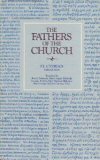
Treatises
- Author: Saint Cyprian
- Translator: Roy J. Deferrari
- Series: Fathers of the Church
- Publisher: Catholic University of America Press
- Publication Date: 1956
- Pages: 387
This volume presents several treatises of St. Cyprian in translation. To Donatus (Ad Donatum) is a monologue written shortly after Cyprian’s baptism in 246 in which he extols his spiritual rebirth in the sacrament of baptism. Literary criticism has come to view this treatise as a model for St. Augustine’s Confessions. The Dress of Virgins (De habitu virginum) written in 249 is addressed to women (“flowers in the Church’s garden”) who have dedicated their lives to God’s service. In this treatise on virginity Cyprian warns these women against seeking finery and the pitfalls of worldliness.
The Fallen (De lapsis), written in 251, deals with the problems encountered in reconciling with the Church those who had defected during the time of persecution. These problems were acute especially after the Decian persecution. The Unity of the Catholic Church (De unitate ecclesiae), written very likely in 251, is directed in the first place against the Novatian schism. This treatise contains the famous words: “He cannot have God for his father who does not have the Church for his mother.”
The Lord’s Prayer (De oratione dominica) is as the title indicates a commentary on the Our Father. Many of its words and phrases remind one of Tertullian whom Cyprian admired greatly. To Demetrian (As Demetrianum) is a vigorous defense of Christianity against pagan calumnies. Mortality (De mortalitate) written perhaps in 252 or later has often been described as being a pastoral letter of a bishop to comfort and console his flock during a time of trial and tribulation.
Work and Alms (De opere et eleemosynis) is a treatise that may have been written in 252 or even later. It is a warm and heartfelt exhortation of a bishop to his flock encouraging them to do good works. The Blessing of Patience (De bono patientiae), written sometime during the year 256, has frequently been described as a sermon delivered during the controversy over the validity of heretical baptism in northern Africa.
Jealousy and Envy (De zelo et livore) like the preceding treatise greatly resembles a sermon delivered on the topic in the title. It was probably written between 251 and 257. To Fortunatus (Ad Fortunatum), a work replete with quotations from Scripture to encourage a Christian in time of persecution, was probably written between 253 and 257. In its original Latin this treatise is an important witness to the text of the Bible before St. Jerome’s revisions. That Idols are not Gods (Quod idola dii non sint) is a relatively unimportant work when judged on the basis of its content. Modern patristic scholars seriously doubt its authenticity.
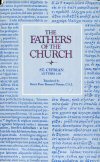
Letters 1–81
- Author: Saint Cyprian
- Translator: Rose Bernard Donna
- Series: Fathers of the Church
- Publisher: Catholic University of America Press
- Publication Date: 1964
- Pages: 368
St. Cyprian’s works fall naturally into two groups: treaties (sermons, libelli, tractus) and letters (epistulae). This volume features his letters, of which 81 have come down to us, written from c. 249 until his death in 258 AD.
They give a penetrating insight into the affairs of the Church in Africa in the middle of the third century. They reveal problems of doctrine and of discipline which had to be decided in a period of crisis and persecution when the Church, still in its infancy, had not yet emerged from the catacombs. Most important of all, they make Cyprian vividly alive as an understanding bishop who could be both gentle and firm, enthusiastic and moderate. He was prudent enough to go into exile to direct his flock from afar when his presence was a potential source of danger to the people; he was courageous enough to face martyrdom that he knew would ultimately he his.
Of these letters, 59 were written by Cyprian himself and six more, emanating from Carthaginian Councils or Synods, were largely his work also. 16 letters were written by others; apparently 11 were lost.
St. Cyprian’s prestige and influence was great in Christian antiquity. Unfortunately, he is not well known or as widely read in modern times as he deserves. This is probably due to Cyprian’s lack of complete orthodoxy, in the modern sense of the word, regarding the recognition of the See of Peter and the rebaptism of heretics. The modern reader must bear in mind that the period of the Fathers was the time of the laying of the foundation of so much which we accept and see so clearly today. In any case, both Lactantius (Div. Inst. 5.1.24) and St. Augustine (De bapt. contra Donatistas), while acknowledging the weaknesses of St. Cyprian’s stand on the questions mentioned, do not in the slightest detract from their respect and admiration for their fellow countryman. Prudentius pays St. Cyprian the following tribute in his Peristephanon 13.5.6 ff.:
As long as Christ will allow the race of men
to exist and the world to flourish,
As long as any book will be, as long as there
Will be holy collections of literary works,
Everyone who loves Christ will read you, O
Cyprian, will learn your teachings.
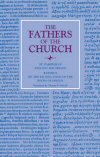
Apology for Origen: with On the Falsification of the Books of Origen
- Authors: Saint Pamphilus and Rufinus
- Translator: Thomas P. Scheck
- Series: Fathers of the Church
- Publisher: Catholic University of America Press
- Publication Date: 2010
- Pages: 164
Presented here for the first time in English translation (from Rufinus’s Latin version) is the Apology for Origen, the sole surviving work of St. Pamphilus of Caesarea (d. 310 AD), who was one of the most celebrated priest-martyrs of the ancient Church. Written from prison with the collaboration of Eusebius (later to become the bishop of Caesarea), the Apology attempts to refute accusations made against Origen, defending his views with passages quoted from his own works. Pamphilus aims to show Origen’s fidelity to the apostolic proclamation, citing excerpts that demonstrate Origen’s orthodoxy and his vehement repudiation of heresy. He then takes up a series of specific accusations raised against Origen’s doctrine, quoting passages from Origen’s writings that confute charges raised against his Christology. Some excerpts demonstrate that Origen did not deny the history of the biblical narratives; others clarify Origen’s doctrine of souls and aspects of his eschatology. Pamphilus was beheaded on February 16, 310, under the emperor Maximinus Daia.
In 397 AD, at the urgent invitation of his friend Macarius, Rufinus of Aquileia translated Pamphilus’s Apology into Latin, the first of his extensive translations of Origen’s writings. Rufinus probably did not suspect the incomparable importance of his undertaking, but by translating Origen he saved from impending ruin some of the most precious monuments of Christian antiquity, destined to form Latin minds for many years to come.
Also presented in this volume is a new English translation of Rufinus’s work, On the Falsification of the Books of Origen in which Rufinus sets forth arguments for his theory that Origen’s writings had suffered interpolations by heretics. Rufinus demonstrates that literary frauds and forgeries carried out by heretics were widespread and affected many writers. He may have been misled by his intense respect for Origen’s genius, and he certainly exaggerated when he claimed that all the doctrinal errors to be met with in Origen’s works were due to interpolations.
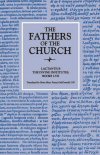
The Divine Institutes, Books I–VII
- Author: Lactantius
- Translator: Mary Francis McDonald
- Series: Fathers of the Church
- Publisher: Catholic University of America Press
- Publication Date: 1964
- Pages: 586
The most important writing of Lactantius, The Divine Institutes was written between 303 and 311. Intended to point out the futility of pagan beliefs juxtaposed next to the reasonableness and truth of Christianity, this major work is one of the earliest systematic apologetic works written. According to the Catholic Encyclopedia, “It was the first attempt at a systematic exposition of Christian theology in Latin, and though aimed at certain pamphleteers who were aiding the persecutors by literary assaults on the Church, the work was planned on a scale sufficiently broad enough to silence all opponents.”
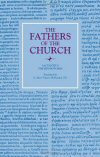
The Minor Works
- Author: Lactantius
- Translator: Mary Francis McDonald
- Series: Fathers of the Church
- Publisher: Catholic University of America Press
- Publication Date: 1965
- Pages: 251
Lactantius lived through one of the greatest turning points in the history of Europe. It has been aptly described as the moment when the old world of paganism was in travail, when against its will it gave birth to the Christian Empire. The writings of this author are, together with those of Eusebius, the principal sources for the period of the great persecution of Diocletian and for the first years of the peace of the Church after the Edict of Milan. For the period of the Council of Nicaea, there is somewhat more abundant source material, but for the years 312–324 reliance must be made upon Eusebius and Lactantius. Both may be considered to have written with considerable bias. They are too extravagant in praise of Constantine; Lactantius especially manifested an odium theologicum toward Galerius and the persecutors. Their works are still of high value, however, as historical sources. From the time of the studies of Maurice, moreover, the evidence of numismatics has verified the historical accounts of these contemporary sources.
The writings of Lactantius, therefore, were composed in one of the most eventful epochs of ecclesiastical history. The Church, after suffering the most sever of despotic persecutions, was suddenly received under state protection and began to enjoy, not merely tranquility and legal status, but even a considerable portion of political influence. The fourth century saw the great fusion of the Christian Church with the Roman state and Hellenistic culture, the fusion which was to spell out Western civilization and determine its achievements.
Perhaps no other writer is more completely revealing of his own times. As pagan rhetoricians were abandoning the schools and the philosophers, the culture of the world was bring saved in the very Church that was charged with its destruction. Lactantius is a sharer of Minucius Felix’s attitude toward traditional culture. He believed that it possessed a vitality, that its treasure should be preserved, that the “spoils of the Egyptians could become the pride of the despised Galilaeans.” In the very act of despoiling them, however, he assigned himself the task of addressing those Egyptians and, in a number of essential features, accepted their own literature and learning. In this way, he saved much of their culture for the Church and became thereby one of the founders of Christian humanism.
Fathers of the Post-Nicene Era
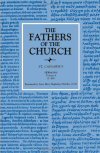
Administrator, theologian, and preacher, Caesarius of Arles provides preaching typical of the age on the abandonment of vices and the pursuit of virtues. In 80 sermons, he addresses aspects of the ancient life in issues of morality and dogma, drawing from the Church Fathers before him. Recognizing the great need for solid content in preaching, he learned the craft of preaching from the writings of the Fathers and Doctors of the Church, drew up his own sermons, and disseminated them to learning clergy and priests under his tutelage.
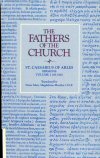
Sermons, vol. 2 (81–186)
- Author: Saint Caesarius
- Translator: Mary Magdeleine Mueller
- Series: Fathers of the Church
- Publisher: Catholic University of America Press
- Publication Date: 1964
- Pages: 508
This volume contains one hundred and ten sermons attributed to St. Caesarius bishop of Arles for forty years (502–542). He is reputed to have been an outstanding spiritual leader presiding at some important synods in Gaul and perhaps second only to St. Augustine a most diligent and effective preacher. This reputation most probably accounts for the large number of sermons attributed to him.
In 1937, Dom Germain Morin, after some 50 years of exacting research published the Caesarean corpus of sermons. His studies led him to question in varying degrees the Caesarean authorship of 54 sermons in this volume which are therefore marked with an asterisk.
In 1971, Marie-José Delage published the results of a more recent study on the Caesarean sermons. The work of Delage indicates that Caesarius must have had access to a good collection of homilies from which he borrowed freely and frequently without ever mentioning the source. At the time of Caesarius this was not an unusual practice. The most frequently used author, as one might suspect, is St. Augustine. This usage ranges from using a complete sermon to which are added a simple introduction and appropriate conclusion, to quotations chosen from the several Augustinian sermons. Other authors used by Caesarius are: Origen (in Latin translation), Ambrose, Eusebius, Quodvultdeus and Cyprian.
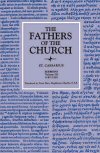
Sermons, vol. 3 (187–238)
- Author: Saint Caesarius
- Translator: Mary Magdeleine Mueller
- Series: Fathers of the Church
- Publisher: Catholic University of America Press
- Publication Date: 1972
- Pages: 311
The present volume completes the presentation of the homiletic works of Caesarius begun in 1956. Following upon the "Admonitions" and the sermons on Scripture contained in the first two volumes, Volume III presents the seasonal sermons, those on feasts of saints, and six addressed to monks. There is added the translation of a sermon published in 1953 and known only by title to Dom G. Morin, upon whose edition (1937–1942) these volumes are based. An Appendix supplies additional notes relating to the sources of the sermons contained in Volumes I and II, as well as the Indices to all three volumes.
As in the translation contained in Volumes I and II (FC 31, 47) moral counsel predominates. The sermons preached to the monks show a Caesarius who accommodates to those especially dedicated Christians an appeal for the avoidance of vices and the pursuit of virtue that more commonly he directs to layfolk. His fervid exhortation is not without its message to those men and women of today who will hear it.
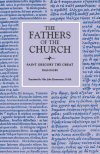
Dialogues
- Author: Saint Gregory the Great
- Translator: Odo John Zimmerman
- Series: Fathers of the Church
- Publisher: Catholic University of America Press
- Publication Date: 1959
- Pages: 303
Gregory the Great was known as an intellectual, administrative, and spiritual giant. While providing for the temporal needs of the Church duing his pontificate (590–604), he wrote the Dialogues to take care of the eternal welfare of his people. In four books, the Dialogues honors the memory of the saints of Italy through the first three, and in the fourth, discusses the immortality of the human soul.
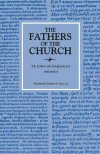
Writings
- Author: Saint John of Damascus
- Translator: Frederic H. Chase, Jr.
- Series: Fathers of the Church
- Publisher: Catholic University of America Press
- Publication Date: 1958
- Pages: 475
St. John of Damascus (ca. 675–749) is generally regarded as the last great figure of Greek Patrology. Outstandingly important for his support of images in the Iconoclastic Controversy, this priest-monk of St. Sabbas near Jerusalem is known also for his treatment of Christian morality and asceticism (the Sacred Parallels), for a small but precious group of powerful sermons, and even for verse contributions to the Greek liturgy. His reputation rests mainly, however, on one of his latest writings, the Fount of Wisdom. This relatively brief work is called by the late Fr. Chase, its new translator, “the first real Summa Theologica”; and its most significant section was in fact known, in Latin translation, to Peter Lombard and St. Thomas Aquinas.
The first part of the Fount of Wisdom, “Philosophical Chapters” (“Dialectica”), goes back to Aristotle mainly and, through Maximus the Confessor, to Plato. Epiphanius is the chief source of Part Two, with its exposition of 103 heresies. The third and most important section of the work, “On the Orthodox Faith,” is a comprehensive presentation of the teaching of the Greek Fathers on the main doctrines of Christianity, especially the Trinity, Creation, and the Incarnation. But what emerges is not a compilation but rather a synthesis, marked by originality in the mode of treatment and by a remarkable clarity of expression. In all three of its parts the Damascene’s Fount of Wisdom is “an indispensable aid to the study of the Greek Christian tradition.”
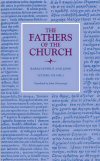
Letters, vol. 1
- Authors: Barsanuphius and John
- Translator: John Chryssavgis
- Series: Fathers of the Church
- Publisher: Catholic University of America Press
- Publication Date: 2006
- Pages: 359
The complete text of the Letters of Barsanuphius and John appears here in English for the first time. John Chryssavgis’s faithful and deft translation brings vividness and freshness to the wisdom of a distant world, ensuring its accessibility to contemporary readers. Addressed to local monastics, lay Christians, and ecclesiastical leaders, these remarkable questions and responses (850 of them) offer a unique glimpse into the sixth-century religious, political, and secular world of Gaza and Palestine during a period torn by doctrinal controversy and in a context shaped by the tradition of the early desert fathers.
The “great old man,” Barsanuphius, and the “other old man,” John, flourished near Gaza around the early sixth century. Choosing to dwell in complete isolation, they saw no one with the exception of their secretaries, Seridos and the well-known Dorotheus of Gaza. Barsanuphius and John communicated in silence through letters with numerous visitors who approached them for counsel. Curiously, this inaccessibility became the very reason for the popularity of the elders. They formed an extraordinarily open system of spiritual direction, which allowed space for conversation and even conflict in relationships, while also accounting for the wisdom and the wit of the correspondence.
Barsanuphius’s inspirational advice responds to problems of a more spiritual nature; John’s institutional advice responds to more practical problems. The two elders in fact complement one another, together maintaining a harmonious authority-in-charity. Their letters are characterized by spontaneity and sensitivity, as well as by discretion and compassion. They stress ascetic vigilance and evangelical “violence,” gratitude and joy, humility and labor, prayer and tears.

Letters, vol. 2
- Authors: Barsanuphius and John
- Translator: John Chryssavgis
- Series: Fathers of the Church
- Publisher: Catholic University of America Press
- Publication Date: 2007
- Pages: 361
The second volume of the Letters of Barsanuphius and John completes the collection of these monastic writings, which provided both spiritual and practical advice to a variety of sixth-century interlocutors from diverse walks of life. The two anchorites, having settled in an isolated location near Gaza, were in demand as trusted counselors, responding to questions on topics ranging from relationships within monasteries to problems of municipal taxation. Barsanuphius, the “great old man,” and John, the “other old man,” fulfilled their time-honored role as resident holy men in their locality, leaving behind a wealth of monastic wisdom as well as inspiration for all Christians.
Distinctive to this volume are many colorful letters that will attract the interest of historians of this period. Some of these are responses to inquiries about specific problems of mundane life, such as veterinary treatment for a horse, the leprous disease of a household servant, and vandalism in a vineyard. Of broader applicability is the advice regarding such issues as the replacement of an unworthy bishop, the management of alms donated for the poor, and the quality of public entertainment in faraway Constantinople. The religious diversity of the Gaza region at this time, a century before the advent of Islam, generated questions about how Christians should interact with Jewish, pagan, and Manichaean fellow citizens.
Abundant also are insights into the human heart. Barsanuphius and John offer timeless teachings on the inner warfare against resentful thoughts, temptations, doubts, anxieties, and reluctance to surrender oneself trustfully to God. They examine the human foibles arising from relationships among monks, and between monks and abbots, with a serene clarity resulting from these holy men's long experience with the introspective asceticism of the desert.
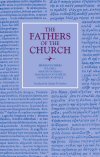
Iberian Fathers, vol. 1: Writings of Martin of Braga, Paschasius of Dumium, and Leander of Seville
- Translator: Claude W. Barlow
- Series: Fathers of the Church
- Publisher: Catholic University of America Press
- Publication Date: 1969
- Pages: 261
In this volume, The Fathers of the Church returns to the Christian Latin writers of the Iberian Peninsula, hitherto represented only by Orosius (Vol. 50) and Prudentius (Vols. 43, 52).
What is now Portugal embraces Braga, the sec-city of Martin, Pannonian-born missionary. While abbot of nearby Dumium, Martin had a pupil Paschasius, whose Questions and Answers of the Greek Fathers has never before been translated complete in any language. To what is now Spain belongs the third author in the volume, Leander, future bishop of Seville, where he was succeeded by his more famous and more prolific brother, Isidore. As with Paschasius, the works of Leander of Seville and of Martin of Braga are translated complete, many for the first time. The subjects range widely and include ethics (with the doctrine sometimes coming from Seneca or other pre-Christian writers), pastoral and ascetical theology, monastic discipline, liturgy, and the computation of the date of Easter.
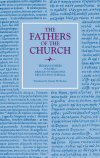
Iberian Fathers, vol. 2: Writings of Braulio of Saragossa and Fructuosus of Braga
- Translator: Claude W. Barlow
- Series: Fathers of the Church
- Publisher: Catholic University of America Press
- Publication Date: 1969
- Pages: 248
In this second volume of translations from the Iberian Fathers appear the works of two seventh-century writers. From the first of these, bishop Braulio of Saragossa, a figure in Visigothic literature second only to St. Isidore of Seville, comes an extensive collection of letters. These are variously addressed to Isidore himself, to other ecclesiastics, to Pope Honorius, and to King Receswinth; friends and relatives were the recipients of seven letters of consolation. Braulio’s letters are joined by the Life of a near contemporary, St. Emilian, and by a valuable list of the writings of Isidore, under whom Braulio studied. Fructuousus of Braga is represented by two monastic rules. The first of these was composed for Compludo, a foundation made by Fructousus himself; the other rule is a general or common one. Two other writings dealing with monastic practice accompany these rules, together with a letter to King Receswinth.
Nearly all of the material presented here by professor Barlow is new to English readers, and all of it offers a lively and wide-ranging insight into conditions prevailing in the seventh century among the people, lay, clerical, and religious, of what later became Spain and Portugal.
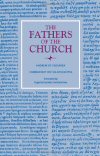
Commentary on the Apocalypse
- Author: Andrew of Caesarea
- Translator: Eugenia Scarvelis Constantinou
- Series: Fathers of the Church
- Publisher: Catholic University of America Press
- Publication Date: 2011
- Pages: 284
The early seventh-century Roman Empire saw plague, civil war, famine, and catastrophic barbarian invasions. Eschatological fervor ran high, as people were convinced that the end of the world was near. In this climate, a noteworthy Greek commentary on the Apocalypse was composed by Andrew, Archbishop of Caesarea, Cappadocia.
In 611, Andrew of Caesarea applied his superior exegetical skills to the challenging Book of Revelation and concluded that the end was not near, in spite of the crises that the empire was facing. Striking a balance between the symbolic language of the book and its literal, prophetic fulfillment, Andrew’s interpretation is a remarkably intelligent, spiritual, and thoughtful commentary that encourages the pursuit of virtue and confidence in the love of God for humanity.
Standing in the stream of patristic tradition, Andrew wove together pre-existing written and oral interpretations of Revelation passages by earlier Fathers and anonymous teachers, drawing together various interpretive strands and pointing to a previously unknown rich tradition of Apocalypse interpretation in the Greek East. His commentary also influenced the textual transmission of the Apocalypse and created a unique text type. Andrew’s commentary quickly eclipsed that of Oikoumenios to become the predominant and standard patristic commentary for the Greek East as well as the Slavic, Armenian, and Georgian Churches. Andrew influenced Eastern Christian eschatology and is responsible for the eventual acceptance of Revelation into the canon of the Oriental and Eastern Orthodox Churches.
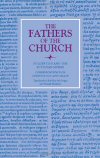
Fulgentius and the Scythian Monks: Correspondence on Christology and Grace
- Author: Fulgentius
- Series: Fathers of the Church
- Publisher: Catholic University of America Press
- Publication Date: 2013
- Pages: 260
St. Fulgentius of Ruspe was perhaps the most brilliant North African theologian in the era after St. Augustine’s death. He wrote widely on theological and moral issues. Between the years AD 519 and 523, Fulgentius engaged in correspondence with a group of Latin-speaking monks from Scythia, and that correspondence is translated into English—almost all of it for the first time—in this volume.
The correspondence is significant because it stands at the intersection of two great theological discussions: the primarily Eastern Christological controversies between the Fourth Ecumenical Council in 451 and the Fifth in 553, and the largely Western Semi-Pelagian controversy, which ran from 427 to the Second Synod of Orange in 529. Contemporary Western scholars normally treat these controversies over Christ and grace separately, but there were noteworthy points of contact between the two discussions, and Fulgentius and the Scythian monks were the ones who drew the connections between Christology and grace most strongly.
These connections suggest that we today may do well to treat Christology and grace more as two sides of the same coin than as separate theological issues. Both sets of issues deal fundamentally with the relation between God and humanity: Christological questions ask how the divine and human are related in the person of the Savior, and grace-related questions ask how the divine and human are linked in the conversion, Christian life, and final salvation of each Christian. Thus, Fulgentius’s correspondence with the Scythian monks can do more than simply aid understanding of sixth-century Byzantine/Roman theology. It can also contribute to our contemporary thinking on the relation between two of the Christian faith's most central doctrines.
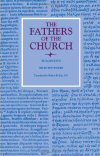
Selected Works
- Author: Fulgentius
- Translator: Robert B. Eno
- Series: Fathers of the Church
- Publisher: Catholic University of America Press
- Publication Date: 1997
- Pages: 601
Fulgentius, bishop of Ruspe (ca. 467–532), is considered the greatest North African theologian after the time of St. Augustine. When Fulgentius was born, North Africa had been under the rule of Germanic Vandals for several decades. His family was repeatedly victimized by Vandal persecutions, and Fulgentius himself suffered persecution and exile. While in exile, he continued his pastoral labors and became the theological spokesman of the displaced. Though he was not an original thinker, he propagated the Augustinian heritage and defended it against its adversaries, notably the Arians and Pelagians (or semi-Pelagians).
With thorough understanding and conviction, Fulgentius promoted the Trinitarian theology of Augustine. He also defended and explained Augustine's difficult and controversial stance on the question of predestination. Fulgentius contributed greatly to the transmission and interpretation of a theological heritage that would dominate and shape the Church in the West for hundreds of years to come.
Unfortunately, many of Fulgentius’s writings have been lost. Of those that have survived, the most important are dated to the period of his second exile and the sixteen years from his return to North Africa from Sardinia until his death. This volume gives English readers for the first time an opportunity to study a representative selection of the writings of this early sixth-century author. It also presents Fulgentius's biography, the Life, for the first time in English.
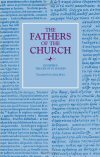
The Life of St. Severin
- Author: Eugippius
- Translator: Ludwig Bieler
- Series: Fathers of the Church
- Publisher: Catholic University of America Press
- Publication Date: 1965
- Pages: 142
The idea of writing about St. Severin, so Eugippius tells us, came to him as he witnessed the success of a Life, in letter-form, of the monk, Bassus, who had died—recently, it seems—in the south of Italy. The Letter, the work of a layman, was circulated privately, and a number of people took copies. Eugippius and his community thought the miracles of their founder should be made known in a similar way. On hearing this, the biographer of Bassus offered his services and approached Eugippius for information. Eugippius, however, had his misgivings, which were probably aroused by an unkown layman’s Letter about Bassus. Eugippius feared that the work would be written in such an elaborate style as to be almost unintelligible to ordinary readers; and, to judge from the literary fashion of the times, such fears were not unfounded. Eugippius, therefore, drafted a sketch of Severin’s life and miracles, and sent it to Paschasius, one of the seven deacons of the Curch of Rome, and author of a work on the Holy Ghost, which later won the approval of Pope Gregory the Great. Eugippius asked Paschasius to turn his sketch into a book of such form and style as its subjects would demand. This request, it seems, was not meant too seriously. Paschasius in his reply politely declined the offer on the grounds that the ‘draft’ of Eugippius served its purpose excellently, and that nothing could be gained by greater elaboration. Eugippius' Memorandum is certainly anything but ‘casual;’ he uses rhetoric deliberately, though in moderation; he observes the rules of prose rhythm; he is aware of certain demands of composition inherent in a literary genre. Eugippius probably meant to ask Paschasius, a high-standing and influential churchman, to write—as we would say nowadays—a ‘Foreword’ that would give his work a wider circulation. Paschasius’ reply, with its highly complimentary remarks, may then be regarded as a response to Eugippius’ polite intimation.
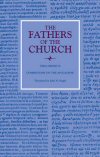
Commentary on the Apocalypse
- Author: Oecumenius
- Translator: John N. Suggit
- Series: Fathers of the Church
- Publisher: Catholic University of America Press
- Publication Date: 2006
- Pages: 228
This is the first complete translation in English of Oecumenius’s commentary, which is the first known Greek commentary on the book of Revelation. Written in the sixth century but discovered only at the beginning of the twentieth, it presents a fascinating view of a writer who strove to be faithful to the teaching of the church while at the same time allowing his imagination to make sense of the stories and visions of Revelation. In interpreting the events surrounding the destruction of the wicked he shows sensible pastoral restraint and refuses to be swayed by the dogmatic certainty shown even by some modern interpreters.
The short introduction to the translation by John N. Suggit provides a brief account of the identity of the author and the theological issues with which he was involved, especially the controversy over the beliefs of Origen and his followers.
The study is particularly interesting today when the words of Scripture are often interpreted literally without the poetic and dramatic quality which alone gives them true life. The book therefore should be of interest not only to serious scholars, but also to those who are ready to listen to this New Testament book not as a record of past history but as the description of the drama of life today.
St. Augustine of Hippo
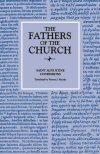
Augustine’s Confessions are his best-known and most influential work, being recognized as the first truly Western autobiographical work. Divided into 13 books, the Confessions are autobiographical admissions of his sinful youth and conversion to Christianity. The translator believes this work was written to address God directly, being both a meditation on the workings of Providence and a hymn of divine praise. Out of all of Augustine’s writings, the Confessions undoubtedly have the broadest appeal and is among his finest literary work.
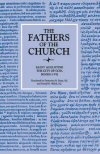
The City of God, Books I–VII
- Author: Augustine of Hippo
- Translators: Demetrius B. Zema and Gerald G. Walsh
- Series: Fathers of the Church
- Publisher: Catholic University of America Press
- Publication Date: 1950
- Pages: 499
Perhaps one of the most profound treatises on Christianity and government, the City of God envisions Christianity as a spiritual force, which should preoccupy itself with the heavenly city, New Jerusalem, rather than the earthly municipal and state affairs. The Fathers of the Church Series has divided this ancient classic into three convenient volumes.
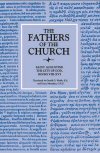
The City of God, Books VIII–XVI
- Author: Augustine of Hippo
- Translators: Gerald G. Walsh and G. Monahan
- Series: Fathers of the Church
- Publisher: Catholic University of America Press
- Publication Date: 1952
- Pages: 567
Perhaps one of the most profound treatises on Christianity and government, the City of God envisions Christianity as a spiritual force, which should preoccupy itself with the heavenly city, New Jerusalem, rather than the earthly municipal and state affairs. The Fathers of the Church Series has divided this ancient classic into three convenient volumes.
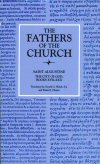
The City of God, Books XVII–XXII
- Author: Augustine of Hippo
- Translator: Gerald G. Walsh
- Series: Fathers of the Church
- Publisher: Catholic University of America Press
- Publication Date: 1954
- Pages: 561
Perhaps one of the most profound treatises on Christianity and government, the City of God envisions Christianity as a spiritual force, which should preoccupy itself with the heavenly city, New Jerusalem, rather than the earthly municipal and state affairs. The Fathers of the Church Series has divided this ancient classic into three convenient volumes.
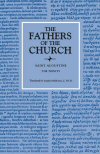
The Trinity
- Author: Augustine of Hippo
- Translator: Stephen McKenna
- Series: Fathers of the Church
- Publisher: Catholic University of America Press
- Publication Date: 1963
- Pages: 556
This is Augustine’s famous treatise discussing the Trinity in the context of logos.
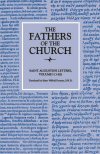
Letters, Volume 1 (1–82)
- Author: Augustine of Hippo
- Translator: Wilfrid Parsons
- Series: Fathers of the Church
- Publisher: Catholic University of America Press
- Publication Date: 1951
- Pages: 442
These letters, taken as a whole, present a vivid and fascinating view of life in North Africa at the beginning of the fifth century. In addition to the comments about ecclesiastical and episcopal affairs, there are also letters on various threats to peace and security common in this period of the late empire, on slavery and the growth of the slave trade, and on Roman involvement in African affairs, both ecclesiastical and civil.
There are letters dealing with moral questions and pastoral problems, in both marriage and the family, as well as in larger areas of doctrine and discipline in the Church. The conflict resulting from the end of the Donatist schism becomes clearer, as does the refrain of desperation stemming from an inadequate supply of clergy for parishes needing to be served. A large number of these letters illustrate the day-to-day worries of a fifth century North African bishop: clerical scandals, Church finances, people seeking sanctuary in a church (and the ensuing problems with the civil authorities), and disputed episcopal succession.
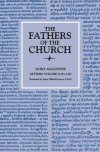
Letters, Volume 2 (83–130)
- Author: Augustine of Hippo
- Translator: Wilfrid Parsons
- Series: Fathers of the Church
- Publisher: Catholic University of America Press
- Publication Date: 1953
- Pages: 415
These letters, taken as a whole, present a vivid and fascinating view of life in North Africa at the beginning of the fifth century. In addition to the comments about ecclesiastical and episcopal affairs, there are also letters on various threats to peace and security common in this period of the late empire, on slavery and the growth of the slave trade, and on Roman involvement in African affairs, both ecclesiastical and civil.
There are letters dealing with moral questions and pastoral problems, in both marriage and the family, as well as in larger areas of doctrine and discipline in the Church. The conflict resulting from the end of the Donatist schism becomes clearer, as does the refrain of desperation stemming from an inadequate supply of clergy for parishes needing to be served. A large number of these letters illustrate the day-to-day worries of a fifth century North African bishop: clerical scandals, Church finances, people seeking sanctuary in a church (and the ensuing problems with the civil authorities), and disputed episcopal succession.
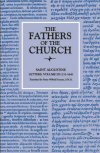
Letters, Volume 3 (131–164)
- Author: Augustine of Hippo
- Translator: Wilfrid Parsons
- Series: Fathers of the Church
- Publisher: Catholic University of America Press
- Publication Date: 1953
- Pages: 412
These letters, taken as a whole, present a vivid and fascinating view of life in North Africa at the beginning of the fifth century. In addition to the comments about ecclesiastical and episcopal affairs, there are also letters on various threats to peace and security common in this period of the late empire, on slavery and the growth of the slave trade, and on Roman involvement in African affairs, both ecclesiastical and civil.
There are letters dealing with moral questions and pastoral problems, in both marriage and the family, as well as in larger areas of doctrine and discipline in the Church. The conflict resulting from the end of the Donatist schism becomes clearer, as does the refrain of desperation stemming from an inadequate supply of clergy for parishes needing to be served. A large number of these letters illustrate the day-to-day worries of a fifth century North African bishop: clerical scandals, Church finances, people seeking sanctuary in a church (and the ensuing problems with the civil authorities), and disputed episcopal succession.
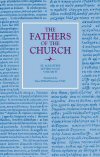
Letters, Volume 4 (165–203)
- Author: Augustine of Hippo
- Translator: Wilfrid Parsons
- Series: Fathers of the Church
- Publisher: Catholic University of America Press
- Publication Date: 1955
- Pages: 434
The Letters appearing here in translation were written approximately between the years 410 and 420. This period in Augustine's life coincides with the ending of the long controversy with the Donatists and the spread of the Pelagian errors concerning nature and grace. When compared with earlier letters there is more emphasis in these letters on intellectual and doctrinal matters.
Perhaps the most important, and certainly the longest in this collection, (pp.141–190) is letter 185 addressed in 417 to the tribune Boniface. It gives a vivid description of the crimes committed by the Donatists against Catholics. Augustine writes: “Some (Catholics) had their eyes put out; one bishop had his hands and tongue cut off; some were massacred. I say nothing of the inhuman beatings, of the looting of homes in nightly raids, of fires set not only to private homes but even to churches; and into these flames some even cast the sacred books” (chapter 30).
The civil authorities eventually intervened in these disturbances and at times with coercive measures. Finally on January 30, 412 the Emperor Honorius made the profession of Donatism a criminal offense and ordered clerics and ministers of such heretics removed from the African soil which they had polluted by sacreligious rites. Though initially opposed to coercion, Augustine changed his view.
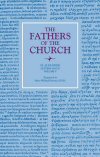
Letters, Volume 5 (204–270)
- Author: Augustine of Hippo
- Translator: Wilfrid Parsons
- Series: Fathers of the Church
- Publisher: Catholic University of America Press
- Publication Date: 1956
- Pages: 333
These letters, taken as a whole, present a vivid and fascinating view of life in North Africa at the beginning of the fifth century. In addition to the comments about ecclesiastical and episcopal affairs, there are also letters on various threats to peace and security common in this period of the late empire, on slavery and the growth of the slave trade, and on Roman involvement in African affairs, both ecclesiastical and civil.
There are letters dealing with moral questions and pastoral problems, in both marriage and the family, as well as in larger areas of doctrine and discipline in the Church. The conflict resulting from the end of the Donatist schism becomes clearer, as does the refrain of desperation stemming from an inadequate supply of clergy for parishes needing to be served. A large number of these letters illustrate the day-to-day worries of a fifth century North African bishop: clerical scandals, Church finances, people seeking sanctuary in a church (and the ensuing problems with the civil authorities), and disputed episcopal succession.
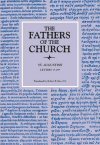
Letters, Volume 6 (1*–29*)
- Author: Augustine of Hippo
- Translator: Robert B. Eno
- Series: Fathers of the Church
- Publisher: Catholic University of America Press
- Publication Date: 1989
- Pages: 220
Most of the works of St. Augustine of Hippo (354–430) have been extant and studied for centuries by Christians throughout the world. Since this Doctor of the Western Church has long been the best known and most widely read of the Latin Fathers, it is so much more unexpected that a previously unknown work should be found. Johannes Divjak found not only a single work but in fact a whole collection of letters, which he published in a critical Latin edition in 1980.
This volume contains the first English translation of these newly discovered letters. The letters range in size from short memoranda to long treatises on various subjects. In addition, there are three other previously unknown letters: two written to Augustine by Consentius, a North African rhetorician, and one written by Saint Jerome to Aurelius of Carthage.
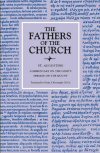
Commentary on the Lord’s Sermon on the Mount with Seventeen Related Sermons
- Author: Augustine of Hippo
- Translator: Denis J. Kavanagh
- Series: Fathers of the Church
- Publisher: Catholic University of America Press
- Publication Date: 1951
- Pages: 382
Originally written between the years 393 and 396, this commentary discusses Matthew 5–7, and is regarded as a product of his early years of his priesthood. His exegesis reveals an unexpected spiritual insight for his limited training at the time of its composition.
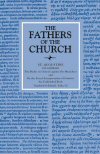
On Genesis: Two Books on Genesis Against the Manichees; And, On the Literal Interpretation of Genesis, an Unfinished Book
- Author: Augustine of Hippo
- Translator: Roland J. Teske
- Series: Fathers of the Church
- Publisher: Catholic University of America Press
- Publication Date: 1990
- Pages: 211
Augustine’s Two Books on Genesis against the Manichees and On the Literal Interpretation of Genesis: An Unfinished Book represent the first two of five explanations of the beginning of the Book of Genesis that he undertook between 388 and 418. In the first, a commentary on Genesis 1–3, Augustine counters the ignorant and impious attacks against Scripture by the Manichees, with whom he was a “hearer” for nine years. The second would have been a hexaemeron, a commentary on the six days of creation, but, as Augustine admits, his inexperience in scriptural exegesis collapsed under the weight of the burden, “and before I finished one book, I gave up the labor that I could not sustain.”
Although Augustine agrees that many things in Scripture may seem absurd to the unlearned, he holds that they can produce great pleasures once they have been explained. It was this tenet, realized in his spiritual rather than corporeal interpretation of Scripture, that led him to counter the impious attacks the Manichees used to attract those who sought a more intellectual understanding of God over and against an anthropomorphic view. Augustine’s brilliant assimilation of Christian revelation and the intellectual faith of the Neoplatonic circle around Ambrose in Milan gave rise to his “spiritual” interpretation of Genesis 1–3 in the Two Books on Genesis against the Manichees.
In On the Literal Interpretation of Genesis: An Unfinished Book, Augustine succeeds in presenting an ad litteram interpretation for 25 verses before arriving at the difficult verse on man’s having been made to God’s image and likeness. At this point he breaks off because, in the words of John O’Meara, “it either tended to blasphemy or could not be reconciled with the Catholic faith.” Perhaps because he later writes that he considers his literal attempt to interpret Genesis a failure, the texts herein translated have become today, in light of modern scriptural studies, fascinating and invaluable examples of Augustine’s developing thought on significant philosophical and theological issues in the interpretation of Genesis.
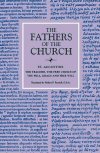
The Teacher; The Free Choice of the Will; Grace and Free Will
- Author: Augustine of Hippo
- Translator: Robert P. Russell
- Series: Fathers of the Church
- Publisher: Catholic University of America Press
- Publication Date: 1968
- Pages: 330
The Teacher, written in the form of a dialogue between Augustine and his son Adeodatus, discusses linguistic philosophies, such as the association of words and their corresponding signs and the nature of that arrangement. This exposes the natural miscommunication that occurs between two conversing humans, establishing his concluding point: we are all called to listen, as God is the source of all true and substantial knowledge.
The second work, The Free Choice of the Will, also written as a dialogue, defends man’s free will to choose right and wrong against the Manichaean view of man as a battlefield in a spiritual war between good and evil.
Finally, Grace and Free Will, written against Pelagius to defend the necessity of grace (and simultaneously deny the sufficiency of free will), demonstrates that grace and free will are not mutually exclusive concepts.
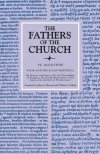
Four Anti-Pelagian Writings
- Author: Augustine of Hippo
- Translator: John A. Mourant
- Series: Fathers of the Church
- Publisher: Catholic University of America Press
- Publication Date: 1992
- Pages: 370
This volume brings together writings from early and late stages of Augustine’s involvement in the Pelagian controversy. On Nature and Grace and On the Proceedings of Pelagius both date from AD 415–416 and constitute two of Augustine’s most extensive treatments of the actual words of Pelagius. On the Predestination of the Saints and On the Gift of Perseverance were probably written in AD 428, near the end of Augustine’s life. Augustine’s opponents in his writings, he admits, are not really Pelagains at all. They were monks of Provence, led by John Cassian, who were disturbed by the more extreme consequences of the theology of grace and predestination that Augustine had worked out in his controversy with the Pelagians. Since the sixteenth century, they have been labeled “semi-Pelagians.”
Taken together, these writings provide an occasion to examine the continuity and development of Augustine’s theology of grace. They also afford much insight into the fifth-century status of many theological questions that are alive today, such as the extent of the damage done to human nature by sin, the theology of original sin, the effects of baptism, and the true meaning and scope of God’s salvific will.
These treatises include some of Augustine's most significant statements on grace. Intended for scholars and students of theology and philosophy, this edition includes three treatises translated for the first time from modern critical texts. William Collinge’s trenchant introductions offer detailed accounts of the historical and critical work done over the hundred years since the last publication.
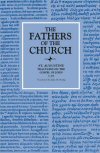
Tractates on the Gospel of John, 1–10
- Author: Augustine of Hippo
- Translator: John W. Rettig
- Series: Fathers of the Church
- Publisher: Catholic University of America Press
- Publication Date: 1988
- Pages: 249
In Christian Latinity, the tractate is a specific type of sermon, delivered as part of a liturgy, which combines scriptural exegesis, preaching, spiritual commentary, and theological reflection. This volume contains the first ten of the 124 tractates on the Gospel of John delivered by St. Augustine, the world-renowned fourth-century bishop of Hippo Regius in North Africa. As sermons they exemplify the theory of preaching he outlined in his De doctrina Christiana (On Christian Instruction)—to preach in a simple and direct style accessible to all without compromising the theological knowledge and spiritual experience of the message.
Because John’s Gospel particularly emphasized the divinity of Jesus, the identity of the historical Jesus with the Messianic Christ, the Trinitarian Word, these sermons necessarily involve much Trinitarian and Christological theology. They explain and defend the orthodox position established at the councils of Nicea (AD 325) and Constantinople (AD 381). Their major theme is that Jesus Christ is the center of the Christian life, the Son of God and the Son of Man.
Beyond contemplation of John's Gospel, the Tractates reveal much about the heresies to which Augustine's congregation was exposed: Manichaeism, with its dualistic logic; Donatism, a schismatic, puritanical, and sacramental movement which involved the intervention of the state in the affairs of the Church; and Pelagianism, with its doctrines of original sin, grace, free will, and predestination.
Augustine delivered these sermons in Ciceronian oratorical style, having as his purpose to teach, to please, and to persuade. Through his allegorical exegesis, his audience was led to an understanding of the meaning of Scripture that would so affect their souls as to help them grow spiritually and bring them to eternal salvation.
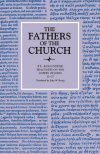
Tractates on the Gospel of John, 11–27
- Author: Augustine of Hippo
- Translator: John W. Rettig
- Series: Fathers of the Church
- Publisher: Catholic University of America Press
- Publication Date: 1988
- Pages: 320
Of the 124 tractates that St. Augustine delivered to his congregation at Hippo Regius, the first fifty-four form a distinct group. They differ in length and character from the remaining tractates, contain many chronological references, and consist of bitter attacks on the Donatists and other heresies. The remaining tractates (55–124) are brief and contain no chronological references to prior tractates. Scholars maintain that the latter were dictated for later reading to the people rather than extemporaneously delivered.
This volume contains tractates 11–27. In 11–16 Augustine continues the attack, begun in tractates 1-10, on the heresies of Manichaeism, Donatism, and Pelagianism. Beginning with the seventeenth tractate, however, he focuses greater attention on Arianism, a Trinitarian heresy whose major tenet was that divine being was uncreated, unbegotten, and unique and that Christ was not true God but a creature who had a beginning. Augustine also attacks lesser Christological heresies: the Apollinarists, who assert that Christ did not assume the complete human nature but only the body, and Photinus of Sirmium, who held that Christ did not except for his miraculous birth and acquired a plenitude of grace through moral perfection.
In these tractates Augustine combines scriptural exegesis, the refutation of false teachings, and theological reflections with the spiritual and moral instruction of his congregation. “Look for separation in the Father and Son, you do not find it; even if you have soared high, then you do not find it; if you have touched something beyond your intellect, then you do not find it. For if you busy yourself in these things which the erring mind makes for itself, you speak with your own images, not with the Word of God; your images deceive you. Transcend the body and savor the mind. Transcend the mind also and savor God.”
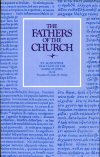
Tractates on the Gospel of John, 28–54
- Author: Augustine of Hippo
- Translator: John W. Rettig
- Series: Fathers of the Church
- Publisher: Catholic University of America Press
- Publication Date: 1993
- Pages: 336
In his preaching, St. Augustine developed an oratorical style based on the classical rhetoric he had learned prior to his conversion which he adapted to the unique demands of Christian preaching. He still recognized the classical ends of rhetoric: to teach, to please, and to persuade. He gave, however, the place of most importance to content: what was said was more important than how it was said. He eschewed the more elaborate figures of speech, using a more direct manner to educate an audience that was, to a great extent, illiterate. The result, however, is not a debased Ciceronian style but a method of preaching that is clear, lively, and well-suited to its purpose.
Just as Augustine’s oratorical style was subordinated to the demands of preaching the gospel of Christ, so also his method of commentary was similarly influenced by his duty as pastor at Hippo to instruct his flock in matters of faith and morals. His commentary, then, contains more than exegesis. His reflections on Scripture lead him to discussions of both moral action and dogma.
Augustine’s extemporaneous style and broad range of interests are evident in the tractates included in this volume, in which he comments on chapters 7–12 of St. John’s Gospel. These chapters contain some of the best-known episodes from the life of Christ: the encounter with the woman caught in adultery, the healing of the man born blind, the raising of Lazarus from the dead, Mary's anointing of Christ’s feet, and Christ’s triumphant entrance into Jerusalem. The passages also contain some of Christ’s most explicit teaching of his divinity. In unfolding the mysteries contained in these chapters of St. John, Augustine moves easily from exegesis to reflections on moral virtue and doctrine, especially the Trinity and the Incarnation. But he never loses sight of his audience. Even in his comments on the loftiest of ideas, he strives to make the teaching accessible to all.
These tractates, then give us a glimpse of the man that we do not often get from his other works. Augustine’s preaching shows us not only his brilliant mind and rhetorical skills as he expounds upon the Scriptures but also the great love he had for Christ and for the faithful entrusted to his care.
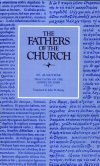
Tractates on the Gospel of John, 55–111
- Author: Augustine of Hippo
- Translator: John W. Rettig
- Series: Fathers of the Church
- Publisher: Catholic University of America Press
- Publication Date: 1994
- Pages: 338
This is the fourth of five volumes of John W. Rettig’s translation of St. Augustine’s Tractates on the Gospel of John. In the Tractates, Augustine progressively comments on the Gospel text, using a plain yet compelling rhetorical style. With the keen insight that makes him one of the glories of the Latin church, he amplifies the orthodox doctrinal and moral lessons to be read therein.
Modern scholars generally concede that Tractates 55–111 fall within a distinct group thought to have been composed between AD 414 and 420. In them Augustine deftly employs the sacred text to defend the teachings of Nicene orthodoxy. Among the more noteworthy theological features upon which the reader can focus is a defense of the much controverted Filioque in Tractate 99. There is also an examination of the paradoxes inherent in the Incarnation: the entrance into history of an immanent and transcendent God the Word; how that union of that Word with human nature; how that union in the Person of Christ does not confound or diminish either Nature. No less significant is Augustine's examination of predestination, the mystery of the elect, love of God as the fruit of contemplation, the Eucharist as the source of the martyr’s strength, the divine Nature, and a source of other topics that remain significant in the discussion of the development of dogma.
In these Tractates Augustine comments upon a discrete portion of the sacred text: the Last Supper and the priestly prayer of Jesus. The reader is left, in the end, in a state of watch with the Savior for his impending Passion, Death, and Resurrection, which will be discussed in the last volume of the Tractates.

Tractates on the Gospel of John, 112–124; Tractates on the First Epistle of John
- Author: Augustine of Hippo
- Translator: John W. Rettig
- Series: Fathers of the Church
- Publisher: Catholic University of America Press
- Publication Date: 1995
- Pages: 315
In this volume, which concludes John W. Rettig’s translation of St. Augustine’s Tractates on the Gospel of John, Augustine applies his keen insight and powers of rhetoric to the sacred text, drawing the audience into an intimate contemplation of Jesus through the course of his Passion, Death, and Resurrection.
Augustine clarifies the meaning of words and phrases (often appealing to the Greek text), resolves obscurities, and reconciles apparent contradictions. He explains the Scriptures on several levels of meaning and draws from them practical implications for the Christian life. Always evident in his teaching and exhortation is his strong desire to lead souls to a knowledge and love of God.
Because the scriptural readings for holy Week and the Octave of Easter were fixed to some extent, during the Easter Octave in AD 407 Augustine had to interrupt his exposition of John’s Gospel after delivering the twelfth tractate. In order to maintain some continuity, he decided to preach upon the First Epistle of John. Its central theme, which Augustine saw to be caritas (Christian love), was especially appropriate at this time, for the Donatist schism had torn many away from the Church at Hippo. In the ten tractates on the First Epistle of John, Augustine develops an outline of his theology on love and explains its implications for the Mystical Body of Christ. He teaches that those who hate the members of Christ cannot truly love Christ—even if they profess otherwise, even if they were to lay down their lives for Him. In these tractates Augustine once again reveals himself as the humble and zealous pastor of souls. His words seem to radiate the very love about which he speaks, so that few of his listeners could accuse him of preaching what he himself did not practice.
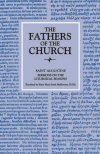
Sermons on the Liturgical Seasons
- Author: Augustine of Hippo
- Translator: Mary Sarah Muldowney
- Series: Fathers of the Church
- Publisher: Catholic University of America Press
- Publication Date: 1959
- Pages: 471
Containing 79 sermons for nine different liturgical seasons on the Christian calendar, these quintessential Augustinian works provide a new look at Augustine’s thought, exploring his gift at oratory writing and the topics of his preaching.
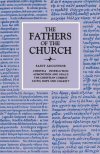
Christian Instruction; Admonition and Grace; The Christian Combat; Faith, Hope and Charity
- Author: Augustine of Hippo
- Translator: John J. Gavigan
- Series: Fathers of the Church
- Publisher: Catholic University of America Press
- Publication Date: 1950
- Pages: 494
This volume contains multiple short works of Augustine’s, exploring the theology, philosophy, and aescetics throughout his life.
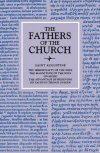
The Immortality of the Soul; The Magnitude of the Soul; On Music; The Advantage of Believing; On Faith in Things Unseen
- Author: Augustine of Hippo
- Translator: Ludwig Schopp
- Series: Fathers of the Church
- Publisher: Catholic University of America Press
- Publication Date: 1947
- Pages: 489
This volume contains multiple short works of Augustine’s, exploring the theology, philosophy, and aescetics throughout his life.
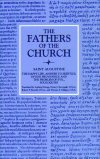
The Happy Life; Answer to Sceptics; Divine Providence and the Problem of Evil, Soliloquies
- Author: Augustine of Hippo
- Translator: Ludwig Schopp
- Series: Fathers of the Church
- Publisher: Catholic University of America Press
- Publication Date: 1948
- Pages: 450
This volume contains multiple short works of Augustine’s, exploring the theology, philosophy, and aescetics throughout his life.
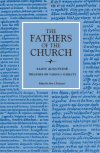
Treatises on Various Subjects
- Author: Augustine of Hippo
- Translator: Mary Sarah Muldowney
- Series: Fathers of the Church
- Publisher: Catholic University of America Press
- Publication Date: 1952
- Pages: 487
The present volume consists of a collection of minor writings of St. Augustine often classified under the general title of ‘Works of Moral and Practical Theology.’ While St. Augustine is well known for his great masterpieces such as the Confessions and City of God, too little is known about him as a writer of short treatises intended for the general spiritual welfare of the people. These little essays still have an unending appeal for people of all times who are concerned about the salvation of their immortal souls.
The treatises included are: The Christian Life (De vita christiana), Lying (De medacio), Against Lying (Contra mendacium), Continence (De continentia), Patience (De patientia), The Excellence of Widowhood (De bono viduitatis), The Work of Monks (De opere monachorum), The Usefulness of Fasting (De utilitate ieiunii), and the Eight Questions of Dulcitius (De octo Dulcitii quaestionibus). Other works of moral and practical theology are not included, notably the De catechizandis rudibus, and the De doctrina christiana, but arrangements have been made to present these in other volumes. Indeed, these two cannot very well be called ‘minor’ works.
The essay, The Christian Life, is Pelagian in tone and is definitely not St. Augustine's, but it is included here because it comes from the same general period as the other essays and treats of a similar subject. Moreover, it has special interest in that it probably was written by a close follower of Pelagius, one of St. Augustine’s celebrated opponents.
Each treatise in this volume has its own introduction, giving pertinent information for an intelligent understanding of the essay and other matters of general interest.
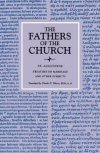
Treatises on Marriage and Other Subjects
- Author: Augustine of Hippo
- Translators: Charles T. Wilcox, Marie Ligouri, John McQuade, Ruth Wentworth Brown, John A. Lacy, Robert P. Russell, and Charles T. Huegelmeyer
- Series: Fathers of the Church
- Publisher: Catholic University of America Press
- Publication Date: 1955
- Pages: 456
A collection of nine short works by Augustine and translated by numerous editors for the Fathers of the Church Series. Among these works includes:
- The Good of Marriage
- Adulterous Marriages
- Holy Virginity
- Faith and Works
- The Creed
- Faith and the Creed
- The Care to be Taken for the Dead
- In Answer to the Jews
- The Divination of Demons
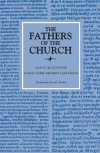
Eighty-Three Different Questions
- Author: Augustine of Hippo
- Translator: David L. Mosher
- Series: Fathers of the Church
- Publisher: Catholic University of America Press
- Publication Date: 1982
- Pages: 279
In the autumn of AD 388, St. Augustine returned from Italy to northern Africa. Here in his native Thagaste he assembled a monastic community. When the brethren found their leader Augustine in a rare moment of leisure, they had no misgivings about putting questions to him on a variety of topics which he answered from the store of his vast knowledge. These questions together with the answers were later collected and assembled in a random order (ractions). The English translation presented here affords the reader a rare opportunity to glimpse some of the topics that interested members of a community that eventually gave the early Church four bishops: Alypius of Thagaste, Severus of Milevis, Profuturus of Citra, and Possidius of Calama.
Even though St. Augustine intended no specific sequence in this collection, four broad categories in the question and answer literary form are discernible. One category serves as Christian apologetic, e.g., against Arian and Manichaean errors. The second presents Augustine in the role of exegete of selected passages from both the Old and New Testaments. The third and fourth categories, containing the greater number of questions and answers, show Augustine the philosopher and theologian, a person of towering intellectual stature in western Christianity and one of the important “Founders of the Middle Ages.” Though formulated between the years AD 388 and 395/97 and presented from the viewpoint of Neoplatonists, many topics, e.g., the cause of evil, sin and freewill, still have great relevance for the modern reader.
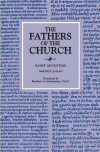
Against Julian
- Author: Augustine of Hippo
- Translator: Matthew A. Schumacher
- Series: Fathers of the Church
- Publisher: Catholic University of America Press
- Publication Date: 1957
- Pages: 427
The Julian mentioned in the title is Julian of Eclanum who was born at Eclanum in Italy in 380 and died in Sicily ca. 455. After the death of his wife, Julian joined the clergy of his native diocese and eventually succeeded his father as bishop. With a mastery of Greek and Latin Julian combined a great store of theological learning which, however, was tainted with Pelagian errors. Because of his support of Pelagius Julian himself was condemned, deposed and expelled from Italy. In his authentic work, four books to Turbantius, three letters, and eight books to Florus, Julian’s heterodox teachings reduced grace to a simple, protective, divine assistance and practically denied that the taint of Adam’s sin passed on to the human race.
In Against Julian Augustine stresses in the first two books the traditional teachings of the Church found in the Fathers and contrasts their teaching with the rationalism of the Pelagians. Thereupon he refutes the error of the Pelagians that grace is given according to merits. To refute the Pelagian error concerning concupiscence Augustine explains the Pauline teaching “that each one may know how to possess his vessel.” In the concluding book we find a detailed explanation of the practice of infant baptism. This section is a valuable witness to the ritual of baptism as it was conferred in the age of the Fathers.
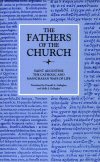
The Catholic and Manichaean Ways of Life
- Author: Augustine of Hippo
- Translator: Donald A. Gallagher
- Series: Fathers of the Church
- Publisher: Catholic University of America Press
- Publication Date: 1966
- Pages: 148
The Catholic and Manichaean Ways of Life conveys Augustine’s early thoughts on the morals and customs practiced by the different sides—that is, Catholic and Manichaean. This younger Augustine intends to disprove the boastings of the Manichaeans that their way of life is more pious and devout than the Catholics—and, further, that the Catholic faith is proven true by its truer systems of devotion.
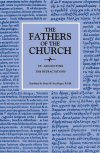
The Retractations
- Author: Augustine of Hippo
- Translator: Mary Inez Bogan
- Series: Fathers of the Church
- Publisher: Catholic University of America Press
- Publication Date: 1968
- Pages: 339
The major portion of St. Augustine’s literary output listed, accounted for, and criticized by the author himself—such is the work here published in English translation for the first time. As the aged Augustine reread his extensive production, he sought to identify and to report to his widely scattered readership anything in his writings that had offended him or might offend others. In achieving this purpose, Augustine brought out a book scarcely to be matched in world literature.
Happily, it was toward the end of his life that the busy Bishop of Hippo set to this review; thus, but few of his “books” fail here to receive his searching self-criticism. His letters and sermons are in general not dealt with; they were to be covered in further parts of the Retractations that Augustine did not live to achieve.
The extensive notes that the translator furnishes supply the background to Augustine’s own discussion of each one of his 93 books, and both analyze and synthesize the bishop’s large and wide-ranging production.
Greek Fathers of the Nicene Era
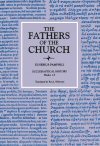
Eusebius was commonly known among the ancients as Eusebius of Caesarea or Eusebius Pamphili. The first designation arose from the fact that he was bishop of Caesarea for many years; the second from the fact that he was a close friend and admirer of Pamphilus, a proselyte of Caesarea and a martyr. At least 40 contemporaries bore the same name, among which the most famous were Eusebius of Samosata—and so arose the necessity of distinguishing him from these others by specific designation.
The year of the Edict of Milan, which divides the first from the second epoch of Church history, does like service for the life and for the literary medium of the Church's first historian. According to the growing assent of scholars, 313 marks off chronologically the Alexandrian from the Byzantine period of Greek literature, and it is 313 that cleaves into uneven but appropriate parts that career of Eusebius Pamphilil. In training and in literary taste, Eusebius belongs to the earlier time. Officially and in literary productivity, he belongs to the later. It was shortly after 313 that Eusebius became a bishop, as it was, for the most part, after 313 that his works were actually composed. Of events contemporary with these later years, Eusebius recorded much that is valued, but it is for what he tells of the earlier period—of the days before the Peace of the Church—that he looms so large in the history of history and of literature. Through him—through him almost alone—are preserved to us the feeble memories of an age that died with himself.
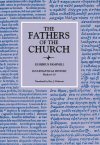
Ecclesiastical History, Books 6–10
- Author: Eusebius Pamphili
- Translator: Roy J. Deferrari
- Series: Fathers of the Church
- Publisher: Catholic University of America Press
- Publication Date: 1955
- Pages: 337
Eusebius was commonly known among the ancients as Eusebius of Caesarea or Eusebius Pamphili. The first designation arose from the fact that he was bishop of Caesarea for many years; the second from the fact that he was a close friend and admirer of Pamphilus, a proselyte of Caesarea and a martyr. At least 40 contemporaries bore the same name, among which the most famous were Eusebius of Samosata—and so arose the necessity of distinguishing him from these others by specific designation.
The year of the Edict of Milan, which divides the first from the second epoch of Church history, does like service for the life and for the literary medium of the Church's first historian. According to the growing assent of scholars, 313 marks off chronologically the Alexandrian from the Byzantine period of Greek literature, and it is 313 that cleaves into uneven but appropriate parts that career of Eusebius Pamphilil. In training and in literary taste, Eusebius belongs to the earlier time. Officially and in literary productivity, he belongs to the later. It was shortly after 313 that Eusebius became a bishop, as it was, for the most part, after 313 that his works were actually composed. Of events contemporary with these later years, Eusebius recorded much that is valued, but it is for what he tells of the earlier period—of the days before the Peace of the Church—that he looms so large in the history of history and of literature. Through him—through him almost alone—are preserved to us the feeble memories of an age that died with himself.
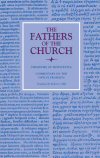
Commentary on the Twelve Prophets
- Author: Theodore of Mopsuestia
- Translator: Robert C. Hill
- Series: Fathers of the Church
- Publisher: Catholic University of America Press
- Publication Date: 2004
- Pages: 448
Friend of John Chrysostom and pupil of Diodore of Tarsus, the founder of the method of exegesis practiced in Antioch, Theodore was appointed bishop of Mopsuestia in Cilicia in 392. His pedigree thus seems impeccable, as was his early reputation as a commentator on the Bible, which earned him the sobriquet “The Interpreter.” More than one modern scholar has been prepared to class Theodore as “the foremost exponent of Antiochene exegesis.” Yet not long after his death in 428—coincidentally, but significantly, the year Nestorius acceded to the see of Constantinople—Theodore became the object of intemperate criticism by the likes of Cyril of Alexandria for his Christological views. His works were condemned by the fifth ecumenical council of 553, and only the Commentary on the Twelve Prophets, here appearing in English for the first time, survives entirely in Greek.
Does Theodore deserve either or both of these extreme assessments? Why did his adversaries allow this one work to survive the flames untouched? Is it because, as has been said in facile repetition, “it contains nothing of Christological import?” The truth emerging from a reading of the Commentary is that both views are wide of the mark. Theodore does not entertain a Christological interpretation of verse after verse in the manner of his Alexandrian contemporary Didymus, but he situates these twelve prophetic figures from the eighth to the sixth century of Israel’s history within an overall Christological perspective. True to his school’s accent on historia, however, he prefers to look for a factual basis to their prophecy (a problem in the case of Jonah), is less sensitive to the moving imagery of a Hosea or a Micah than modern readers would appreciate, and is unfamiliar with the genre of apocalyptic, which appears especially in Joel and Zechariah. Theodoret of Cyrus in the decades after Theodore's death had his works open before him as he commented on prophets, just as modern commentators will also appreciate his work.
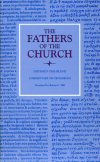
Commentary On Zechariah
- Author: Didymus the Blind
- Translator: Robert C. Hill
- Series: Fathers of the Church
- Publisher: Catholic University of America Press
- Publication Date: 2006
- Pages: 383
The book of Zechariah is “the longest and most obscure” of the Twelve Minor Prophets, Jerome remarked. That may have been the reason why in 386 he visited the Alexandrian scholar Didymus the Blind and requested a work on this prophet. Though long thought to be lost, the work was rediscovered in 1941 at Tura outside Cairo along with some other biblical commentaries. As a result we have in our possession a commentary on Zechariah by Didymus that enjoys particular distinction as his only complete work on a biblical book extant in Greek whose authenticity is established, which comes to us by direct manuscript tradition, and has been critically edited. Thus it deserves this first appearance in English.
A disciple of Origen, whose work on Zechariah reached only to chapter five and is no longer extant, Didymus’s commentary on this apocalyptic book illustrates the typically allegorical approach to the biblical text that we associate with Alexandria. Even Cyril of Alexandria in the next generation will lean rather to the historical style of commentary found in the Antiochene scholars Theodore and Theodoret, whose works on the Twelve are also extant and who had Didymus open before them. Didymus alone offers his readers a wide range of spiritual meanings on the obscure verses of Zechariah, capitalizing on his extraordinary familiarity with Holy Writ (despite his disability), and proceeding on a process of interpretation-by-association, frequently invoking also etymology and number symbolism to plumb the meaning of the text. No wonder he remarks, “The reader who understands it is a seer;” such is the richness of the hermeneutical offering.
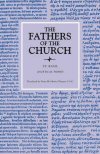
Ascetical Works
- Author: Basil of Caesarea
- Translator: M. Monica Wagner
- Series: Fathers of the Church
- Publisher: Catholic University of America Press
- Publication Date: 1950
- Pages: 537
His zealous and intrepid defense of the orthodox faith and his contribution to handling the external affairs of the Eastern Church were by no means the whole service to which St. Basil the Great devoted his considerable talents. His life both exemplified and shaped the ascetical movement of his time. After renouncing a brilliant career as rhetorician, he traveled widely, studying the various forms of asceticism practiced in Eastern Christendom. On his return, he retired in the year 358 to a place near Neocaesarea to put into practice the best of what he had seen, and there disciples soon joined him. When his friend Gregory of Nazianzus visited him there in 358, he began to write his Rules and other works that have had great importance in promoting and regulating the common life of monasticism. This life, regulated and freed from excess, as an expression of the law of charity was to be the monk’s path to union with God. Basil’s concept of the monastic ideal, socially directed and moderate without being lax, became the fundamental concept of Greek and Slavonic monasticism, and it influenced St. Benedict in legislating for Western monasticism.
The ascetical writings of St. Basil contained in this volume, addressed to both monks and laymen, are of prime importance for understanding the role their author played in the Church of the fourth century and, through his influence, still plays today.
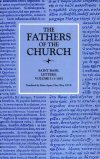
Letters, vol. 1 (1–185)
- Author: Basil of Caesarea
- Translator: Agnes Clare Way
- Series: Fathers of the Church
- Publisher: Catholic University of America Press
- Publication Date: 1951
- Pages: 363
The letters of St. Basil, 368 in number, which comprise the most vivid and most personal portion of his works, give us, perhaps, the clearest insight into the wealth of his rich and varied genius. They were written within the years from 357, shortly before his retreat to the Pontus, until his death in 378, a period of great unrest and persecution of the orthodox Catholic Church in the East. Their variety is striking, ranging from simple friendly greetings to profound explanations of doctrine, from playful reproaches to severe denunciations of transgressions, from kindly recommendations to earnest petitions for justice, from gentle messages of sympathy to bitter lamentations over the evils inflicted upon or existent in the churches.
As may be expected, the style in these letters is as varied as their subject matter. Those written in his official capacity as pastor of the Church, as well as the letters of recommendation and the canonical letters, are naturally more formal in tone, while the friendly letters, and those of appeal, admonition, and encouragement, and, more especially, those of consolation, show St. Basil’s sophistic training, although even in these he uses restraint. He had the technique of ancient rhetoric at his fingertips, but he also had a serious purpose and a sense of fitness of things. To St. Basil’s letters can be ascribed the qualities he attributed to the heartily approved book written by Diodorus, which qualities may be summed up as fullness of thought, clearness, simplicity, and naturalness of style. He himself disapproved of a too ornate style and carefully avoided it. His early education, however, had trained him for the use of rich diction and varied and charming figures, and, when the occasion warranted it, he proved himself a master in their use.
Whether we look at them from an historical, an ecclesiastical, or a theological point of view, the letters are an important contribution.
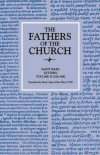
Letters, vol. 2 (186–368)
- Author: Basil of Caesarea
- Translator: Agnes Clare Way
- Series: Fathers of the Church
- Publisher: Catholic University of America Press
- Publication Date: 1955
- Pages: 386
The letters of St. Basil, 368 in number, which comprise the most vivid and most personal portion of his works, give us, perhaps, the clearest insight into the wealth of his rich and varied genius. They were written within the years from 357, shortly before his retreat to the Pontus, until his death in 378, a period of great unrest and persecution of the orthodox Catholic Church in the East. Their variety is striking, ranging from simple friendly greetings to profound explanations of doctrine, from playful reproaches to severe denunciations of transgressions, from kindly recommendations to earnest petitions for justice, from gentle messages of sympathy to bitter lamentations over the evils inflicted upon or existent in the churches.
As may be expected, the style in these letters is as varied as their subject matter. Those written in his official capacity as pastor of the Church, as well as the letters of recommendation and the canonical letters, are naturally more formal in tone, while the friendly letters, and those of appeal, admonition, and encouragement, and, more especially, those of consolation, show St. Basil’s sophistic training, although even in these he uses restraint. He had the technique of ancient rhetoric at his fingertips, but he also had a serious purpose and a sense of fitness of things. To St. Basil’s letters can be ascribed the qualities he attributed to the heartily approved book written by Diodorus, which qualities may be summed up as fullness of thought, clearness, simplicity, and naturalness of style. He himself disapproved of a too ornate style and carefully avoided it. His early education, however, had trained him for the use of rich diction and varied and charming figures, and, when the occasion warranted it, he proved himself a master in their use.
Whether we look at them from an historical, an ecclesiastical, or a theological point of view, the letters are an important contribution.
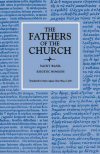
Exegetic Homilies
- Author: Basil of Caesarea
- Translator: Agnes Clare Way
- Series: Fathers of the Church
- Publisher: Catholic University of America Press
- Publication Date: 1963
- Pages: 394
These exegetical homilies explore numerous Psalms and the Hexaemeron—and ancient theological treatise on the six-day creation account. These writings on the Hexaemeron are the earliest written and were noted to be extremely popular among the educated Christians of his era, and display a profound devotion to God and evidence of his goodness in the workings of creation.
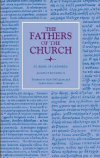
Against Eunomius
- Author: Basil of Caesarea
- Translators: M. DelCogliano and A. Radde-Gallwitz
- Series: Fathers of the Church
- Publisher: Catholic University of America Press
- Publication Date: 2011
- Pages: 222
Basil of Caesarea is considered one of the architects of the Pro-Nicene Trinitarian doctrine adopted at the Council of Constantinople in 381, which eastern and western Christians to this day profess as “orthodox.” Nowhere is his Trinitarian theology more clearly expressed than in his first major doctrinal work, Against Eunomius, finished in 364 or 365 CE. Responding to Eunomius, whose Apology gave renewed impetus to a tradition of starkly subordinationist Trinitarian theology that would survive for decades, Basil’s Against Eunomius reflects the intense controversy raging at that time among Christians across the Mediterranean world over who God is.
In this treatise, Basil attempts to articulate a theology both of God’s unitary essence and of the distinctive features that characterize the Father, Son, and Holy Spirit—a distinction that some hail as the cornerstone of “Cappadocian” theology. In Against Eunomius, we see the clash not simply of two dogmatic positions on the doctrine of the Trinity, but of two fundamentally opposed theological methods. Basil’s treatise is as much about how theology ought to be done and what human beings can and cannot know about God as it is about the exposition of Trinitarian doctrine. Thus Against Eunomius marks a turning point in the Trinitarian debates of the fourth century, for the first time addressing the methodological and epistemological differences that gave rise to theological differences. Amidst the polemical vitriol of Against Eunomius is a call to epistemological humility on the part of the theologian, a call to recognize the limitations of even the best theology.
While Basil refined his theology through the course of his career, Against Eunomius remains a testament to his early theological development and a privileged window into the Trinitarian controversies of the mid-fourth century.
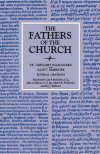
Funeral Orations
- Author: Gregory of Nazianzus
- Translator: Leo P. McCauley
- Series: Fathers of the Church
- Publisher: Catholic University of America Press
- Publication Date: 1953
- Pages: 367
The Christian funeral oration is one of the most elaborate of Christian literary forms. It represents an attempt to adapt to Christian use a pagan Greek form with many hundreds of years behind it. . . . The Christian masterpieces presented in this volume reflect a long, rich, and varied pagan literary tradition in East and West, and at the same time exhibit modifications and new elements which give them their specific Christian character.
The volume presents the most generally admired ancient Christian funeral orations—four from the Greek (those of St. Gregory Nazianzen), four from the Latin (those of St. Ambrose of Milan). From the Bishop of Nazianzen, we have words spoken in honor of three kinsmen, his father, a brother, and a sister, and of the great St. Basil, Bishop of Caesarea. Two of the orations from the lips of St. Ambrose are likewise for a kinsman, his brother Satyrus, while the other two are for wearers of the purple, the youthful Valentinian II and the emporor Theodosius.
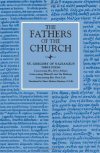
Three Poems
- Author: Gregory of Nazianzus
- Translator: Denis Molaise Meehan
- Series: Fathers of the Church
- Publisher: Catholic University of America Press
- Publication Date: 1987
- Pages: 154
Raised in a multi-generational Christian family, Gregory of Nazianzus was also well-educated, well-traveled, and tutored in almost every discipline of the Greek arts, philosophies, sciences, and literatures. Among his studies must have included Homer, Hesiod, Apollonius of Rhodes, Thucydides, Plutarch, Herodotus, Lucian, Socrates, Plato, Aristotle—the list goes on. The numerous poems written by Gregory had a profound influence over Byzantine hymnology, although, beyond that, they largely provide a treasure trove of autobiographical and historical data. The poem Concerning His Own Life is the earliest known Christian autobiography, and probably had a direct influence on Augustine’s Confessions.
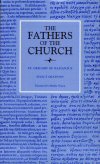
Select Orations
- Author: Gregory of Nazianzus
- Translator: Martha Vinson
- Series: Fathers of the Church
- Publisher: Catholic University of America Press
- Publication Date: 2004
- Pages: 274
This translation makes available nineteen orations by the fourth-century Cappadocian father Gregory of Nazianzus. Most are appearing here in English for the first time. These homilies span all the phases of Gregory’s ecclesiastical career, beginning with his service as a parish priest assisting his father, the elder Gregory, in his hometown of Nazianzus in the early 360s, to his stormy tenure as bishop of Constantinople from 379 to 381, to his subsequent return to Nazianzus and role as interim caretaker of his home church (382–383). Composed in a variety of rhetorical formats such as the lalia and encomium, the sermons treat topics that range from the purely theological to the deeply personal.
Up until now, Gregory has been known primarily for his contributions as a theologian, indifferent to the social and political concerns that consumed his friend Basil. This view will change. It has been due in large measure to the interests and prejudices of the nineteenth-century editors who excluded the sermons translated here from the Select Library of Nicene and Post-Nicene Fathers of the Church. This new translation will help the English-speaking reader appreciate just how deeply Gregory was engaged in the social and political issues of his day.
Exemplifying the perfect synthesis of classical and Christian paideia, these homilies will be required reading for anyone interested in late antiquity. The introduction and notes accompanying the translation will assist both the specialist and the general reader as they seek to navigate the complex environment in which Gregory lived and worked.
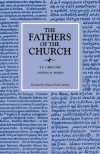
Ascetical Works
- Author: Gregory of Nyssa
- Translator: Virginia Woods Callahan
- Series: Fathers of the Church
- Publisher: Catholic University of America Press
- Publication Date: 1967
- Pages: 311
In the Christian world of the fourth century, the family of St. Gregory of Nyssa was distinguished for its leadership in civic and religious affairs in the region of the Roman Empire known as Pontus. Cardinal Newman, in an essay on the trials of St. Basil, refers to the family circle which produced these two eminent Fathers as “a sort of nursery of bishops and saints.” From St. Gregory’s life of his sister, St. Macrina, a work included in this volume, we learn of the fortitude of the three preceding generations. On her death-bed, St. Macrina, recalling details of their family history, speaks of a great-grandfather martyred and all his property confiscated, and grandparents deprived of their possessions at the time of the Dioceltian persecutions. Their father, Basil of Caesarea, a successful rhetorician, outstanding for his judgment and well known for the dignity of his life, died leaving to his wife, Emmelia, the care of four sons and five daughters. St. Gregory praises his mother for her virtue and for her eagerness to have her children educated in Holy Scripture. After managing their estate and arranging for the future of her children, she was persuaded by St. Macrina to retire from the world and to enter a life common with her maids as sisters and equals. This community of women would have been a counterpart of the monastery founded nearby by St. Basil on the banks of the Iris River. In a moving scene, St. Gregory tells of his mother's death at a rich old age in the arms of her oldest and youngest children, Macrina and Peter. Blessing all of her children, she prays in particular for the sanctification of these two who were, indeed, later canonized as saints. Newman notes the strong influence of the women in the family, and in one of his letters, St. Basil gives credit to his mother and his grandmother, the elder Macrina, for his clear and steadfast idea of God.
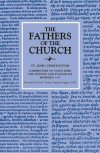
Commentary on Saint John the Apostle and Evangelist: Homilies 1–47
- Author: John Chrysostom
- Translator: Thomas Aquinas Goggin
- Series: Fathers of the Church
- Publisher: Catholic University of America Press
- Publication Date: 1957
- Pages: 505
The homilies on St. John’s Gospel come from the period in which Chrysostom attained his greatest fame as pulpit orator, the years of his simple priesthood at Antioch (386–397). This was the peaceful period in Chrysostom’s life that preceded his elevation to the episcopacy as patriarch of Constantinople (398), wherein adverse imperial and ecclesiastical reaction to his program of moral reform led to his deposition, banishment, and all but martyr’s death (407).
The 88 homilies, which date from about 390, work systematically through the text of St. John’s Gospel and thus form a commentary upon it. In his exposition Chrysostom reflects his youthful Antiochene training in the interpretation of Holy Scripture through his emphasis upon the literal or historical meaning of the sacred text. The exposition focuses sharply on practical morality and thus often supplies telling information about fourth-century life and times. The homilies show the flowering of Chrysostom’s intensive study of rhetoric and are especially commendable for their command of imagery. The first 47 homilies carry Chrysostom’s commentary through chap. 6.54–72; the remaining 41, extending the commentary through to the end of the Gospel, are contained in vol. 41 of this series.
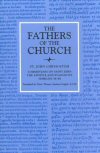
Commentary on Saint John the Apostle and Evangelist: Homilies 48–88
- Author: John Chrysostom
- Translator: Thomas Aquinas Goggin
- Series: Fathers of the Church
- Publisher: Catholic University of America Press
- Publication Date: 1959
- Pages: 507
The homilies on St. John’s Gospel come from the period in which Chrysostom attained his greatest fame as pulpit orator, the years of his simple priesthood at Antioch (386–397). This was the peaceful period in Chrysostom’s life that preceded his elevation to the episcopacy as patriarch of Constantinople (398), wherein adverse imperial and ecclesiastical reaction to his program of moral reform led to his deposition, banishment, and all but martyr’s death (407).
The 88 homilies, which date from about 390, work systematically through the text of St. John’s Gospel and thus form a commentary upon it. In his exposition Chrysostom reflects his youthful Antiochene training in the interpretation of Holy Scripture through his emphasis upon the literal or historical meaning of the sacred text. The exposition focuses sharply on practical morality and thus often supplies telling information about fourth-century life and times. The homilies show the flowering of Chrysostom’s intensive study of rhetoric and are especially commendable for their command of imagery. The first 47 homilies carry Chrysostom’s commentary through chap. 6.54–72; the remaining 41, extending the commentary through to the end of the Gospel, are contained in vol. 41 of this series.
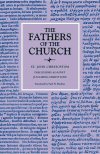
Discourses Against Judaizing Christians
- Author: John Chrysostom
- Translator: Paul W. Harkins
- Series: Fathers of the Church
- Publisher: Catholic University of America Press
- Publication Date: 1979
- Pages: 348
St. John Chrysostom’s Discourses Against Judaizing Christians are eight homilies or sermons with a unifying theme: the correction of certain abuses in a fourth-century Christian community. Judged by modern tastes the Discourses may seem lengthy, and Chrysostom himself admits that they taxed his energies when he complains of having become hoarse. In Antioch of the late fourth century two highly divisive forces contributed to deteriorating Judaeo-Christian relations: very successful Jewish proselytizing, and Christian Judaizing. Both activities profoundly disturbed a vigilant leader and eloquent preacher such as Chrysostom was.
These Discourses, frequently interrupted by applause from the audience, present in their historical context one facet of the deteriorating relations. Antedating Chrysostom by some two centuries, emerging views that the Jews were a people cursed and dispersed in punishment for their unbelief and deicide were gaining credence; witness some statements by Irenaeus in Lyons and Tertullian in northern Africa. In the course of time certain passages of sacred Scripture began to be reinterpreted, when occasion presented itself, in such a way as to endow the polemics with divine authority.
A simplistic view of the complex problem of anti-Semitism raised the cry, almost a century ago, that the Church nurtures hatred against the Jews and at the same time protected them from the fury she had unleashed. However, on October 28, 1965, Vatican Council II issued a decree: Declaration on the Church’s Attitude Toward Non-Christian Religions (cf. Acta apostolicae sedis 58 (1966) 740–744). Therein the Council officially re-affirmed the common religious patrimony of Jews and Christians. It clearly rejected any alleged collective guilt of the Jewish people for the death of Christ and their alleged rejection of God.
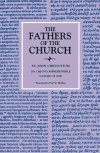
On the Incomprehensible Nature of God
- Author: John Chrysostom
- Translator: Paul W. Harkins
- Series: Fathers of the Church
- Publisher: Catholic University of America Press
- Publication Date: 1984
- Pages: 371
10 of the 12 homilies of St. John Chrysostom presented here were delivered at Antioch over a period of several years beginning in AD 386. The final two homilies were delivered in 398 after Chrysostom became patriarch of Constantinople.
All but one of the homilies aim at refuting the Anomoeans, heretics who revived the most radical tenets of Arius and blatantly claimed that man knows God in the very same way that God knows himself. Chrysostom’s refutations and instructions to the faithful are based on the Scriptures rather than on human reasoning. He departed from this series of refutations only in the sixth homily, which he delivered on December 20, 386, again at Antioch. It consists of a panegyric of St. Philogonius, bishop of Antioch ca. AD 319–323, who before his episcopal ordination had led a very exemplary life, practiced law and contracted a marriage that was blessed with a daughter.
In addition to their theological content, these homilies contain many other points of interest. On one occasion, people applauded the speaker and were very attentive to the homily but then left the church so that when Christ is about to appear in the holy mysteries the church becomes empty (Hom III.32; Hom VII.2). During another homily, pickpockets plied their trade so that Chrysostom urged “let no one come into the church carrying money” (Hom IV.46). Chrysostom also indicates that people kept talking to one another at the sacred moment when Christ becomes present (Hom IV.36). He also mentions that chariot races often proved more enticing than going to church (Hom VII.1). Finally, valuable information on fourth-century Eastern liturgies is found in Hom III.41, 42, and Hom IV.32.
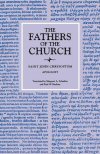
Apologist
- Author: John Chrysostom
- Translator: Margaret A. Schatkin
- Series: Fathers of the Church
- Publisher: Catholic University of America Press
- Publication Date: 1985
- Pages: 310
Apologist is the English translation of two of Chrysostom’s treatises, written about 378 and 382, aimed at provoking the divinity of Jesus Christ.
In Discourse in Blessed Babylas and Against the Greeks, Chrysostom responds to specific attacks on Christianity by such philosophers as Porphyry, using historical narrative and the arguments of fulfilled prophecies to prove Christ’s divinity. Chrysostom relates the story of St. Babylas, bishop and martyr, who defended the Church against an evil emperor and whose relics produced sobriety at Daphne and silenced the oracle of Apollo. Although a product of Christianized sophistic rhetoric, the discourse on Babylas furnishes interesting new material on the development of the veneration of relics and church-state relations in the third and fourth centuries. Schatkin’s translation is based on her critical edition prepared for Sources Chrétiennes.
The Demonstration Against the Pagans that Christ Is God is one of Chrysostom’s earlier works and one of his basic contributions to apologetics. Chrysostom argues for Christ’s divinity in the fulfillment of Old Testament prophecies and in Christ’s own prophecies—particularly those on the phenomenal growth of the Church—to provide proof of a power that can be only divine. Harkins’ translation is based on the unpublished critical edition of Norman G. McKendrick.
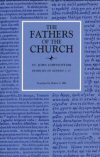
Homilies on Genesis, 1–17
- Author: John Chrysostom
- Translator: Robert C. Hill
- Series: Fathers of the Church
- Publisher: Catholic University of America Press
- Publication Date: 1986
- Pages: 255
This translation makes available for the first time in English one of the most significant Old Testament commentaries of the patristic period. St. John Chrysostom’s extant works outnumber those of any other Father of the East; in the West, only Augustine produced a larger corpus. Of Chrysostom’s more than 600 exegetical homilies, however, only those on the New Testament have previously been translated into English.
The Genesis homilies, his richest Old Testament series, reveal a theologian, pastor, and moralist struggling to explain some of the most challenging biblical material to his congregation in Antioch. He admonishes them to “apply yourself diligently to the reading of Sacred Scripture, not only when you come along here, but at home,” encourages spiritual discourse, and frequently envisages them leaving church reminiscing on the day's sermon. While critical exegetical details go without mention and Chrysostom was limited to the Greek version of the Old Testament in his studies, his oratory has been judged golden and his theology profound. He was a preacher satisfied with commenting on Scripture with his moral purpose always to the fore.
Chrysostom studied the Scriptures with Diodore of Tarsus, a distinguished exegete known from fragments of his commentaries on Genesis and Psalms, and a polemic style developed from his pastoral concern to protect his congregation from the dangerous influences of fourth-century Antioch. Most importantly, he shared the Antiochene school’s insistence on the literal sense of Scripture and their unwillingness to engage in allegorical interpretation. As such, his Genesis homilies constitute a milestone in the history of biblical interpretation.
This first of several volumes on Genesis contains homilies 1–17, delivered in Antioch before Chrysostom moved to Constantinople in 398. Robert C. Hill’s thorough introduction highlights Chrysostom’s significance as a scriptural commentator and provides the basis for an interesting comparison with modern commentators, such as Von Rad and Speiser.
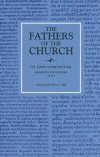
Homilies on Genesis, 18–45
- Author: John Chrysostom
- Translator: Robert C. Hill
- Series: Fathers of the Church
- Publisher: Catholic University of America Press
- Publication Date: 1990
- Pages: 483
John Chrysostom, called the “golden-mouthed” for his eloquent preaching, continues in this second volume of the 67 Genesis homilies to provide instruction for the moral reformation of the Christians of Antioch. He continues in Homily 18 with Genesis 3 and finishes in Homily 45 with Genesis 20. They seem to have been delivered perhaps as early as 385, half just before and during Lent and the remainder, from Homily 33 onward, after Pentecost.
That Chrysostom favored Antiochene exegesis is clear from his exhortation at the beginning of Homily 20 to “take up the thread of the reading and apply. . . the teaching from the passage.” “You see,” he writes, “there is not even a syllable or even one letter contained in Scripture which does not have great treasure concealed in its depth.” He artfully interprets the literal spiritual meaning of this treasure for his congregation through inspiring and colorful exegesis.
It was Chrysostom’s pastoral responsibility to guide his congregation by means of homiletic exegesis. He urged his listeners to take note of the instruction and to give attention to the correction of their own daily lives so as to “proceed to the enjoyment of salvation.” The theme of the good man Noe, who remained unaffected by the universal decline of mankind into wickedness, provides the example for the moral improvement of his listeners in Homilies 23–29, as does the hospitality of Abraham in Homilies 41–45.
The Genesis homilies reveal Chrysostom as commentator, preacher, moralist, and profoundly theological and precise exegete of Scripture, the truth of which he teaches for the betterment of this congregation.
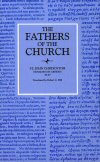
Homilies on Genesis, 46–67
- Author: John Chrysostom
- Translator: Robert C. Hill
- Series: Fathers of the Church
- Publisher: Catholic University of America Press
- Publication Date: 1982
- Pages: 288
St. John Chrysostom delivered his Homilies on Genesis sometime between AD 385 and AD 388, while yet a priest at Antioch. In the homilies in this volume, the last of three, Chrysostom concludes his examination of the lives and virtues of the Old Testament patriarchs Abraham, Isaac, Jacob, and Joseph as recounted in the last three chapters of Genesis.
Known for his eloquent preaching, Chrysostom delivered these final 22 homilies after Pentecost. His motive for examining the accounts of the lives of the patriarchs is to show how the just forebears of the Israelites, in a time when both the law and the Gospel were yet unpreached, were able to live Christian lives with only simple trust in God and the balanced, almost ingenuous manners of antiquity. His interest in the events and characters of Genesis is largely moral, even moralistic; he tends to see Scripture as hagiography. His style of commentary, although not really thorough exegesis, arises out of his deep conviction of the divine inspiration of Scripture—hence the habitual attention to detail, “not idly or to no purpose” being his frequent comment on the precision of the text.
As an exegete, Chrysostom may seem disappointing to those grounded in the methods of modern biblical scholarship, since he largely ignores any sense of Scripture other than the literal and is generally unaware of how to resolve difficulties and appreciate subtleties that a knowledge of the original text would provide. However, what lacks in scientific accuracy he more than compensates for with his earnest practice of pastoral care.
This final volume of the homilies includes a general index and an index of biblical citations, the latter indicating the rich scriptural diet Chrysostom’s congregation—who came daily for his homilies—enjoyed.
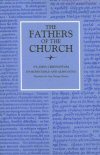
On Repentance and Almsgiving
- Author: John Chrysostom
- Translator: Gus George Christo
- Series: Fathers of the Church
- Publisher: Catholic University of America Press
- Publication Date: 1998
- Pages: 177
St. John Chrysostom delivered nine homilies on repentance in Antioch of Syria sometime between 386 and 387. With conviction and certitude, he preached that repentance was a necessity for both the sinner and the righteous man. This volume presents Chrysostom’s homilies on repentance and includes a sermon on almsgiving that he preached in Antioch during the winter months in 387.
Chrysostom’s work reveals that repentance is an indestructible pillar of the All-Holy, Universal and Immutable Church of Christ. He believed that repentance is the liturgical tool that rejuvenates sinners and admits them into the life-giving Eucharist where they experience fully and dynamically the concrete presence of God.
The powers of repentance have rich biblical roots, and Chrysostom masterfully weaves his teaching with a plethora of Old and New Testament citings. From Scripture, the reader learns that repentance is never confined to the eucharistic context—it becomes a way of life for the believer. The daily applications of repentance, such as almsgiving, fasting, remorse over personal sins, humility, prayer, and attending Church, suggest that a person’s entire life has an ecclesial character. Chrysostom preached that the whole experience of a true life in Christ is repentance that culminates in metanoia—the total change and renewal from the heart and mind of sin to “the mind of Christ” (1 Cor. 2:16).
In his introduction to the homilies, Fr. Gus Christo includes a succinct biography of Chrysostom within which he sets the homilies in their chronological context. He also provides an overview of repentance and discusses the ecclesiological nature of Chrysostom’s theology.
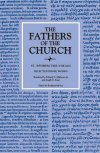
Selected Prose Works
- Author: Ephrem the Syrian
- Translator: Edward G. Mathews, Jr.
- Series: Fathers of the Church
- Publisher: Catholic University of America Press
- Publication Date: 1994
- Pages: 423
This volume presents for the first time in the Fathers of the Church series the work of an early Christian writer who did not write in either Greek or Latin. It offers new English translations of selected prose works by St. Ephrem the Syrian (c. AD 309–373). The volume contains St. Ephrem’s Commentary on Genesis, Commentary on Exodus, Homily on Our Lord, and Letter to Publius. The translators have enhanced the volume with a general introduction, extensive bibliography, and specific introductions to each of the works. Together these features provide an overview of the major scholarship on St. Ephrem and Syriac Christianity.
St. Ephrem, the “Harp of the Spirit,” composed prose commentaries and sermons of skillfull charmand grace, in addition to beautiful hymns, during the time he spent teaching at his native Nisibis and at Edessa in Syria. In the two commentaries presented here, Ephrem focuses only on portions of the sacred text that had a particular theological significance for him, or whose orthodox interpretation needed to be reasserted in the face of contemporary heterodox ideas. He does not provide a continuous, verse by verse exposition. The elaborate rhetorical figures and stylistic devices of the Homily on Our Lord and Letter to Publius succeed in creating language and imagery nearly as striking as Ephrem’s poetry.
St. Ephrem marshaled his considerable theological and rhetorical talent to challenge the appeal that the doctrines of the Arians, Manicheans, Marcionites, and the followers of Bardaisan might have had to the minds and hearts of Syrian Christians. In the face of their rational systems, his was the voice that insisted on the incomprehensibility of the divine nature.
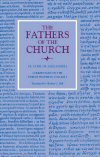
Commentary on the Twelve Prophets, vol. 1
- Author: Cyril of Alexandria
- Translator: Robert C. Hill
- Series: Fathers of the Church
- Publisher: Catholic University of America Press
- Publication Date: 2007
- Pages: 327
Cyril, Bishop of Alexandria (412–444), is best known as a protagonist in the christological controversy of the second quarter of the fifth century. Readers may be surprised therefore to find such polemic absent from this early work on the twelve minor prophets of the Old Testament. Another possibly unexpected feature of this Alexandrian commentary is its focus on historical exegesis, which reveals Cyril’s serious interest in the fortunes of the people of Israel and Judah in the centuries preceding and following the exile. Unlike his predecessor Didymus the Blind, Cyril abjures an approach that dismisses the historicity of the text (as in his opening defense of Hosea’s marriage), and he proceeds to other levels of interpretation, moral and spiritual, only after a preliminary examination of the historical.
Indebted to the diverse approaches of Didymus, Jerome, and Theodore, Cyril appears in this work as a balanced commentator, eclectic in his attitude and tolerant of alternative views. Although he displays an occasional uncertainty in his grasp of historical and geographical details, as well as an inclination to verbosity, Cyril has conspicuously influenced the exegesis of his younger contemporary Theodoret of Cyrus, and has made a vital contribution to the development of biblical interpretation in the church.
Cyril of Alexandria was the Patriarch of Alexandria from 412 to 444. His uncle, Pope Theophilus of Alexandria, was Patriarch of Alexandria from 385 to 412. Cyril was well educated, wrote extensively, and was a leading figure in the First Council of Ephesus in 431, the third ecumenical council of the early Christian Church. The council convened amid disputes over the teachings of Nestorius, Patriarch of Constantinople, and Cyril led the charges of heresy against Nestorius. Nestorius’ teachings were condemned by the council, leading to the formation of separate denominations that broke from the Orthodox church.
Cyril of Alexandria is venerated as a saint in the Roman Catholic Church, Eastern Orthodox Church, Oriental Orthodox Church, Anglican Church, and Lutheran Church.
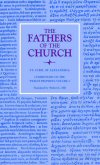
Commentary on the Twelve Prophets, vol. 2
- Author: Cyril of Alexandria
- Translator: Robert C. Hill
- Series: Fathers of the Church
- Publisher: Catholic University of America Press
- Publication Date: 2008
- Pages: 442
Cyril of Alexandria’s contributions to theology are not confined to his prominent role in the fifth-century christological conflict, but are also vital to the development of biblical exegesis. Drawing insights from older contemporaries, Cyril examines in depth the historical contexts of prophetic texts, utilizing his knowledge of events and geographical locations in deriving his interpretations. Imperfect though his knowledge is, his approach is worthy of admiration because it combines historical analysis with moral and spiritual perspectives in achieving a balance that cannot be labeled as either “Alexandrian” or “Antiochene.” This balance is assured by the broad diversity among Cyril’s sources, namely, Didymus the Blind, Jerome, and Theodore of Mopsuestia. Cyril in turn has exerted a direct influence on Theodoret of Cyrus, thus forging a link in the succession of patristic exegetical developments.
For Cyril, as for the Fathers in general, the internal unity of the Bible guarantees that its texts can be applied to the interpretation of other texts within the scriptural canon. A focal point of Cyril’s interpretation is the relationship between God and his people as it unfolds in the course of history, revealing a sovereign God who, while tolerating no infidelity, perseveres patiently in correcting the errant. This relationship is the basis of a motif that unifies the Old and New Testaments, with the prophets serving as precursors of the Savior; thus their proclamations, though often aimed at the events of their own times, speak to believers of all eras.
Cyril of Alexandria was the Patriarch of Alexandria from 412 to 444. His uncle, Pope Theophilus of Alexandria, was Patriarch of Alexandria from 385 to 412. Cyril was well educated, wrote extensively, and was a leading figure in the First Council of Ephesus in 431, the third ecumenical council of the early Christian Church. The council convened amid disputes over the teachings of Nestorius, Patriarch of Constantinople, and Cyril led the charges of heresy against Nestorius. Nestorius’ teachings were condemned by the council, leading to the formation of separate denominations that broke from the Orthodox church.
Cyril of Alexandria is venerated as a saint in the Roman Catholic Church, Eastern Orthodox Church, Oriental Orthodox Church, Anglican Church, and Lutheran Church.
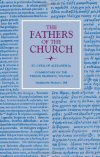
Commentary on the Twelve Prophets, vol. 3
- Author: Cyril of Alexandria
- Translator: Robert C. Hill
- Series: Fathers of the Church
- Publisher: Catholic University of America Press
- Publication Date: 2012
- Pages: 368
This final volume in a series of three contains Cyril’s commentary on Zephaniah, Haggai, Zechariah, and Malachi. Applying his knowledge of ancient Israelite history in his analysis of the immediate context for each of these prophetic books, Cyril believes that Zephaniah was addressed to the residents of Jerusalem in the years preceding the Babylonian Exile, and the other three were addressed to a newly repatriated, post-exilic nation.
An emphasis on theodicy is a primary theme of this book. God’s love for humankind, says Cyril, is expressed in the many warnings sent through the prophets and in the ample amount of time that God allows for people to repent. When no repentance ensues, God sends harsh but just punishments, employing the brutality of enemy nations as his instruments, yet always doing so with the loving purpose of returning his people to himself.
Cyril’s focus on the historical details of the Old Testament is matched by his concern for the Church of his own day. Where the prophetic oracles mention the Jewish priesthood, altar, or sacrifices, Cyril takes the opportunity to exhort Christian priests to preserve their moral purity and to fulfill their liturgical duties with devotion. This extrapolation from the ancient to the contemporary, from Israel to the Church, is compatible with the typological interpretation that Cyril utilizes in conjunction with his literal, historical approach. The Temple is a type, or foreshadowing, of the Church, and the sacrificial lamb of the Passover prefigures Christ. Thus Cyril maintains his connection with the Alexandrian tradition of allegorical exegesis while presenting a balanced, multi-faceted interpretation that applies passages from many other parts of the Bible to extract a wealth of meaning from the prophetic books.
Cyril of Alexandria was the Patriarch of Alexandria from 412 to 444. His uncle, Pope Theophilus of Alexandria, was Patriarch of Alexandria from 385 to 412. Cyril was well educated, wrote extensively, and was a leading figure in the First Council of Ephesus in 431, the third ecumenical council of the early Christian Church. The council convened amid disputes over the teachings of Nestorius, Patriarch of Constantinople, and Cyril led the charges of heresy against Nestorius. Nestorius’ teachings were condemned by the council, leading to the formation of separate denominations that broke from the Orthodox church.
Cyril of Alexandria is venerated as a saint in the Roman Catholic Church, Eastern Orthodox Church, Oriental Orthodox Church, Anglican Church, and Lutheran Church.
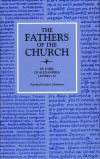
Letters, 1–50
- Author: Cyril of Alexandria
- Translator: John I. McEnerney
- Series: Fathers of the Church
- Publisher: Catholic University of America Press
- Publication Date: 1987
- Pages: 254
Cyril of Alexandria famously took up the debate against Nestorius on the theological interpretation of the deity of Christ, a number of which are addressed in these volumes. This fifth-century Christological controversey comprises most of the teaching of these letters, notably even letters not addressed to Nestorius. The conflict with Nestorius eventually brought Nestorius to condemnation after the Council of Ephesus in 431, in which Cyril presides at the request of Pope Celestine. Almost the entire collection here has to do with the controversey surrounding the Council of Ephesus and the schism of bishops on either side of the theological controversey.
Cyril of Alexandria was the Patriarch of Alexandria from 412 to 444. His uncle, Pope Theophilus of Alexandria, was Patriarch of Alexandria from 385 to 412. Cyril was well educated, wrote extensively, and was a leading figure in the First Council of Ephesus in 431, the third ecumenical council of the early Christian Church. The council convened amid disputes over the teachings of Nestorius, Patriarch of Constantinople, and Cyril led the charges of heresy against Nestorius. Nestorius’ teachings were condemned by the council, leading to the formation of separate denominations that broke from the Orthodox church.
Cyril of Alexandria is venerated as a saint in the Roman Catholic Church, Eastern Orthodox Church, Oriental Orthodox Church, Anglican Church, and Lutheran Church.
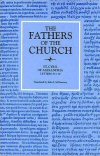
Letters, 51–110
- Author: Cyril of Alexandria
- Translator: John I. McEnerney
- Series: Fathers of the Church
- Publisher: Catholic University of America Press
- Publication Date: 1987
- Pages: 215
Cyril of Alexandria famously took up the debate against Nestorius on the theological interpretation of the deity of Christ, a number of which are addressed in these volumes. This fifth-century Christological controversey comprises most of the teaching of these letters, notably even letters not addressed to Nestorius. The conflict with Nestorius eventually brought Nestorius to condemnation after the Council of Ephesus in 431, in which Cyril presides at the request of Pope Celestine. Almost the entire collection here has to do with the controversey surrounding the Council of Ephesus and the schism of bishops on either side of the theological controversey.
Cyril of Alexandria was the Patriarch of Alexandria from 412 to 444. His uncle, Pope Theophilus of Alexandria, was Patriarch of Alexandria from 385 to 412. Cyril was well educated, wrote extensively, and was a leading figure in the First Council of Ephesus in 431, the third ecumenical council of the early Christian Church. The council convened amid disputes over the teachings of Nestorius, Patriarch of Constantinople, and Cyril led the charges of heresy against Nestorius. Nestorius’ teachings were condemned by the council, leading to the formation of separate denominations that broke from the Orthodox church.
Cyril of Alexandria is venerated as a saint in the Roman Catholic Church, Eastern Orthodox Church, Oriental Orthodox Church, Anglican Church, and Lutheran Church.
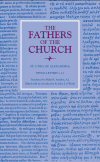
Festal Letters, 1–12
- Author: Cyril of Alexandria
- Translator: Philip R. Amidon
- Series: Fathers of the Church
- Publisher: Catholic University of America Press
- Publication Date: 2009
- Pages: 260
St. Cyril of Alexandria is best known for his role in the Christological disputes of the fifth century. In recent years, however, scholars have turned their attention to Cyril the exegete. Cyril wrote extensive commentaries on nearly every book of the Bible; in fact, two-thirds of his extant corpus is devoted to biblical interpretation. Yet, despite this strong interest in Cyril as theologian and biblical interpreter, his activity as the Patriarch of Alexandria remains obscure. Doctrinal treatises and biblical commentary reveal little of the daily pastoral duties that occupied Cyril during his years as leader of one of ancient Christianity’s most important sees. This new translation of Cyril’s festal letters will help fill these gaps.
Twenty-nine in all, these letters cover all but three of Cyril’s years as bishop. In Alexandria, festal letters functioned primarily as a vehicle for announcing the beginning of Lent and the proper date for the celebration of Easter. They also served an important catechetical purpose by providing the patriarch with an annual opportunity to present his flock with a pastoral version of the theological issues that found more formal and complex expression elsewhere. Thus, Cyril’s Festal Letters offer the modern reader a glimpse into the issues that Cyril himself considered important enough to proclaim to the entire diocese and a sample of how he prepared these ideas for reception by a less sophisticated audience.
These letters illuminate other aspects of the ancient church in Alexandria, including that church’s complex relationship with the Jews and other religious groups, as well as the ways in which the ascetical movement wound its way into the patriarch’s pastoral program. In short, Cyril of Alexandria’s Festal Letters provides modern readers with a rare opportunity to enter the daily reality of the church in ancient Alexandria.
Cyril of Alexandria was the Patriarch of Alexandria from 412 to 444. His uncle, Pope Theophilus of Alexandria, was Patriarch of Alexandria from 385 to 412. Cyril was well educated, wrote extensively, and was a leading figure in the First Council of Ephesus in 431, the third ecumenical council of the early Christian Church. The council convened amid disputes over the teachings of Nestorius, Patriarch of Constantinople, and Cyril led the charges of heresy against Nestorius. Nestorius’ teachings were condemned by the council, leading to the formation of separate denominations that broke from the Orthodox church.
Cyril of Alexandria is venerated as a saint in the Roman Catholic Church, Eastern Orthodox Church, Oriental Orthodox Church, Anglican Church, and Lutheran Church.
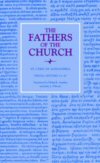
Festal Letters, 13–30
- Author: Cyril of Alexandria
- Series: Fathers of the Church
- Publisher: Catholic University of America Press
- Publication Date: 2013
- Pages: 240
St. Cyril of Alexandria is best known for his role in the Christological controversies of the fifth century. In recent decades, scholars have been attending more carefully to his exegetical legacy. Most of Cyril’s work takes the form of biblical commentary rather than doctrinal treatise. Indeed, during his long career he wrote commentaries on nearly every book of the Bible. Less attention, however, has been given to Cyril’s pastoral work as the Patriarch of Alexandria, perhaps because his commentaries and doctrinal treatises do not reveal much about his daily pastoral duties. Here the Festal Letters are especially helpful.
Twenty-nine in all, these letters cover all but three of Cyril’s years as a bishop. The present volume completes the set. Festal letters were used in Alexandria primarily to announce the beginning of Lent and the date of Easter. They also served a catechetical purpose, however, allowing the Patriarch an annual opportunity to write pastorally not just about issues facing the entire see, but also about the theological issues of the day. Thus, in these letters we catch a glimpse of Cyril the pastor writing about complex theology in an uncomplicated way. These letters also illuminate other realities of the ancient church in Alexandria, especially the relationship with the Jewish community and the rising influence of asceticism.
Cyril of Alexandria was the Patriarch of Alexandria from 412 to 444. His uncle, Pope Theophilus of Alexandria, was Patriarch of Alexandria from 385 to 412. Cyril was well educated, wrote extensively, and was a leading figure in the First Council of Ephesus in 431, the third ecumenical council of the early Christian Church. The council convened amid disputes over the teachings of Nestorius, Patriarch of Constantinople, and Cyril led the charges of heresy against Nestorius. Nestorius’ teachings were condemned by the council, leading to the formation of separate denominations that broke from the Orthodox church.
Cyril of Alexandria is venerated as a saint in the Roman Catholic Church, Eastern Orthodox Church, Oriental Orthodox Church, Anglican Church, and Lutheran Church.
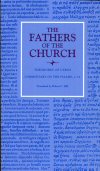
Commentary on the Psalms, 1–72
- Author: Theodoret of Cyrus
- Translator: Robert C. Hill
- Series: Fathers of the Church
- Publisher: Catholic University of America Press
- Publication Date: 2000
- Pages: 451
This volume makes available for the first time in English the major biblical commentary by one of the leading exponents of Antiochene exegesis, Theodoret, bishop of Cyrus. Though originally intended as an opening to his exegetical work—in the manner of his predecessors in this school, Theodore of Mopsuestia and John Chrysostom—Theodoret’s Psalms commentary comes from his later ministry in the decade before the Council of Chalcedon, which he was instrumental in convening. It thus documents current christological and trinitarian concerns and illustrates an Antiochene hermeneutic that rests firmly on the literal sense of the “inspired composition of the mighty David.”
Though commentators less well acquainted with this lengthy work have been ready to dismiss Theodoret as lacking originality, a sounder assessment would acknowledge his willingness to take account of previous work, from both Alexandria and Antioch, and steer a middle course. He deliberately avoids the excesses of allegorical interpretation of Origen, on the one hand, and of the historicism found in Diodore and Theodore, on the other. Moderation and flexibility are the hallmarks of his own approach to the Psalms, to which he comes not as scholar or preacher but as teacher and pastor. He aims simply to offer his readers “some benefit in concentrated form.”
This translation respects the conciseness which the bishop sets as one aim for himself, his other principle being to let the text speak for itself. Theodoret emerges in this work as a measured commentator and balanced exponent of his school’s hermeneutical and theological principles.
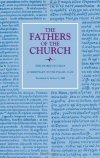
Commentary on the Psalms, 73–150
- Author: Theodoret of Cyrus
- Translator: Robert C. Hill
- Series: Fathers of the Church
- Publisher: Catholic University of America Press
- Publication Date: 2001
- Pages: 395
This volume completes the Commentary on all the Psalms written by Theodoret, bishop of Cyrus, in the decade before the Council of Chalcedon held in 451, “a triumph of Antiochene theology,” in the words of J. N. D. Kelly. The work thus bears the marks of the theological currents of those years, especially as Theodoret was instrumental in convening that Council and was involved in the Christological and trinitarian debates of the period.
Theodoret’s work of commentary offers readers a great spiritual classic that has contributed to Christian spiritual formation and received the attention of eminent commentators from Antioch and Alexandria in the East, and from the likes of Augustine of Hippo in the West. As this volume closes, Theodoret claims modestly to have offered his readers the best of his predecessors’ work (including Alexandrian commentators) together with his own insights into “the Spirit’s hidden mysteries.” He writes as a teacher, not a preacher in his pulpit, with the purpose simply of dispelling ignorance, concerned that “those singing [the Psalter] daily and uttering the words by mouth do not enquire about the force of the ideas underlying the words.”
This translation respects the conciseness which the bishop sets as one aim for himself, his other principle being to let the text speak for itself. Theodoret emerges in this work as a measured commentator and balanced exponent of his school’s hermeneutical and theological principles.
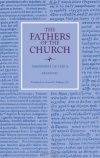
Eranistes
- Author: Theodoret of Cyrus
- Translator: Gerard H. Ettlinger
- Series: Fathers of the Church
- Publisher: Catholic University of America Press
- Publication Date: 2003
- Pages: 291
This translation of a major document in patristic Christology, the first translation since the nineteenth century, is based upon the modern critical edition of Theodoret’s Greek text. Theodoret was the leading theologian of his time in the Antiochene tradition, and in the Eranistes (written in 447) he offers a lengthy exposition of his Christology, coupled with a refutation of the so-called Monophysite Christology that, despite its condemnation at the General Council held at Chalcedon in 451, survives to this day, having been embraced by several large churches of the East. The “Monophysite” controversy caused a tremendous rift between East and West, and the Eranistes portrays the hostility and the stubborn resistance to the thought of others that afflicted both sides in the conflict.
The Eranistes is written in the form of three dialogues between two characters: Orthodox, who represents Theodoret's thought, and Eranistes, who is presented as a heretic. In two dialogues Theodoret argues that the Word of God was immutable and impassible in his divine nature, and that Christ experienced change and passion only in his human nature. A third dialogue argues that, in the union of the divinity and humanity in the one person of the Word incarnate, the natures remained unmixed. To bolster his arguments Theodoret incorporates extensive citations, not only from orthodox ecclesiastical writers, but also from the heretic Apollinarius and the suspected Arian, Eusebius of Emesa. The texts of many of these citations are known only from the Eranistes and are therefore important witnesses to the development of patristic Christology.
Critical issues in Antiochene and Alexandrian Christology are broached by Theodoret in the text and are further discussed by the translator in the introduction and notes.
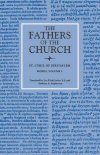
The Works of Saint Cyril of Jerusalem, vol. 1
- Author: Cyril of Jerusalem
- Translator: Leo P. McCauley
- Series: Fathers of the Church
- Publisher: Catholic University of America Press
- Publication Date: 1969
- Pages: 240
Cyril’s life of some seventy years, placed in the very center of the fourth century, epitomizes much that was characteristic of the period and the locale. Bishop of Jerusalem for nearly forty years, he experienced three expulsions from his see, these due as much to politico-ecclesiastical rivalry as to his participation in the contemporary theological controversies, in which Cyril played an important and still disputed role. The present volume carries about half of the bishop's most valuable production, a series of catechetical lectures for Lent and Easter week.
The introductory lecture (the Procatechesis) admitted the catechumens to the instructions to follow. Of these, the Catecheses proper, the first twelve appear in this first volume, the remaining six, with the five Mystogogical Lectures (for Easter Week), are in volume 2. The conferences are based firmly in the sacraments and in the successive articles of the Creed. It is upon the Creed and the various forms of it with which Cyril was involved that much of the extended Introduction centers. Cyril’s body of catechetical lectures, which has been called “one of the most precious treasures of Christian antiquity,” can make a telling contribution to the catechetical renewal within the Church of today and to the study and devotion of clergy and layfolk alike.
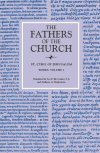
The Works of Saint Cyril of Jerusalem, vol. 2
- Author: Cyril of Jerusalem
- Translator: Leo P. McCauley
- Series: Fathers of the Church
- Publisher: Catholic University of America Press
- Publication Date: 1969
- Pages: 276
Cyril’s life of some seventy years, placed in the very center of the fourth century, epitomizes much that was characteristic of the period and the locale. Bishop of Jerusalem for nearly forty years, he experienced three expulsions from his see, these due as much to politico-ecclesiastical rivalry as to his participation in the contemporary theological controversies, in which Cyril played an important and still disputed role. The present volume carries about half of the bishop's most valuable production, a series of catechetical lectures for Lent and Easter week.
This volume includes the remaining six lectures for catechists and the five Mystogogical Lectures.
Latin Fathers of the Nicene Era
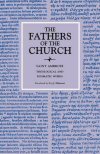
St. Ambrose was an archbishop of Milan and one of the most influential figures of the fourth century. He is one of the original four Doctors of the Church and Latin theologians. His writings had a direct influence on St. Augustine, and his intense ecclesiastical awareness expanded and reinforced the Church’s sacerdotal ministry and the high standards of Christian ethics. He furthered fourth-century Mariology, Christology, and soteriology, and allegedly ended Arianism in his diocese, Milan. These volumes of his collected and translated writings bring the intensity of his ancient rhetoric back to the present, allowing us an unusually full glimpse at the early church.
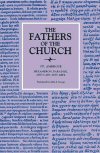
Hexameron, Paradise, Cain and Abel
- Author: Saint Ambrose
- Translator: John J. Savage
- Series: Fathers of the Church
- Publisher: Catholic University of America Press
- Publication Date: 1961
- Pages: 468
St. Ambrose was an archbishop of Milan and one of the most influential figures of the fourth century. He is one of the original four Doctors of the Church and Latin theologians. His writings had a direct influence on St. Augustine, and his intense ecclesiastical awareness expanded and reinforced the Church’s sacerdotal ministry and the high standards of Christian ethics. He furthered fourth-century Mariology, Christology, and soteriology, and allegedly ended Arianism in his diocese, Milan. These volumes of his collected and translated writings bring the intensity of his ancient rhetoric back to the present, allowing us an unusually full glimpse at the early church.
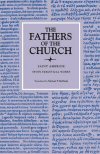
Seven Exegetical Works
- Author: Saint Ambrose
- Translator: Michael P. McHugh
- Series: Fathers of the Church
- Publisher: Catholic University of America Press
- Publication Date: 1970
- Pages: 494
St. Ambrose was an archbishop of Milan and one of the most influential figures of the fourth century. He is one of the four original Doctors of the Church and Latin theologians. His writings had a direct influence on St. Augustine, and his intense ecclesiastical awareness expanded and reinforced the Church’s sacerdotal ministry and the high standards of Christian ethics. He furthered fourth-century Mariology, Christology, and soteriology, and allegedly ended Arianism in his diocese, Milan. These volumes of his collected and translated writings bring the intensity of his ancient rhetoric back to the present, allowing us an unusually full glimpse at the early church.
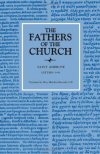
Letters, 1–91
- Author: Saint Ambrose
- Translator: Mary Melchior Beyenka
- Series: Fathers of the Church
- Publisher: Catholic University of America Press
- Publication Date: 1954
- Pages: 534
St. Ambrose was an archbishop of Milan and one of the most influential figures of the fourth century. He is one of the original four Doctors of the Church and Latin theologians. His writings had a direct influence on St. Augustine, and his intense ecclesiastical awareness expanded and reinforced the Church’s sacerdotal ministry and the high standards of Christian ethics. He furthered fourth-century Mariology, Christology, and soteriology, and allegedly ended Arianism in his diocese, Milan. These volumes of his collected and translated writings bring the intensity of his ancient rhetoric back to the present, allowing us an unusually full glimpse at the early church.
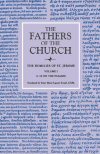
Homilies, vol. 1 (1–59 on the Psalms)
- Author: Saint Jerome
- Translator: Marie Ligouri Ewald
- Series: Fathers of the Church
- Publisher: Catholic University of America Press
- Publication Date: 1965
- Pages: 450
This volume contains 59 homilies preached by St. Jerome on selected Psalms. Jerome’s knowledge of the “three Sacred Languages,” Latin, Greek and Hebrew, his acquaintance with the exegetical methods of Antioch and Alexandria, his use of Origen’s Hexapla and his work on the Psalter are impressive credentials for the quality of these works.
As far as can be determined now these homilies were intended primarily for the instruction and edification of the monastic community that Jerome had established in Bethlehem where he spent the closing years of his life. They were recorded by scribes in the audience, and consequently the text may at times reflect the inadequacies of the listener.
Whether all the homilies that appear here are extemporaneous products of Jerome’s vast erudition and eloquence is a question that still awaits a satisfactory answer. Some scholars believe that an affirmative answer is correct, others citing the evidence of Homily 69 on Psalm 91, think that the content of some homilies is too deeply theological to be an impromptu composition. In any event, some patristic scholars have been bold enough to declare Jerome the most learned Latin Father of the Church.
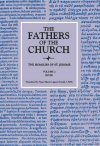
Homilies, vol. 2 (Homilies 60–96)
- Author: Saint Jerome
- Translator: Marie Ligouri Ewald
- Series: Fathers of the Church
- Publisher: Catholic University of America Press
- Publication Date: 1966
- Pages: 305
This volume of the Homilies of Saint Jerome contains fifteen homilies on Saint Mark’s Gospel, Homilies 75–84. In general, as in volume 1, Morin’s text has been followed as reproduced in the Corpus Christianorum, series latina 78.
The editors of the Corpus have added two homilies, one delivered on the Feast of the Epiphany from the Gospel of our Lord’s baptism and on Psalm 28, edited by B. Capelle; the other on the First Sunday of Lent, edited by I. Fraipont. In the present volume, they are Homilies 89 and 90.
Dom Germain Morin, as noted in the Introduction of Volume 1 of this translation, discovered fourteen homilies, providing a second series on the Psalms, in four Italian Codices dating from the tenth and fifteenth centuries. He examined with great care their probable identity with, or relationship to, the lost homilies of Saint Jerome catalogues in De viris illustribus “on the Psalms, from the tenth to the sixteenth, seven homilies.” There is more work to be done and many problems to be resolved, however, before this identification can be established with certitude. This chief obstacle is that of chronology. The De viris illustibus was written in all probability in 392–393, whereas the homilies appear to have been written in 402, the date determined by the study of Dom Morin. Other scholars, as U. Moricca, A. Penna, G. Grützmacher, give 394 and 413 as the earliest and latest dates, respectively, for all the homilies.
There is question also whether the Septuagint or the Hebrew Psalter was in the hands of Jerome when he wrote or preached the homilies on Psalms 10 and 15. They seem, in fact, to have been written rather than delivered, for he speaks of readers rather than hearers. They differ from the regular series of sermons in their greater erudition, more sophisticated language, many Greek expressions, and variations from the Hexapla. The closing doxology so characteristic of the other sermons is missing in them. They are much longer, and Jerome speaks of certain details as if he had already explained them. On the whole, they give evidence, too, of greater care in preparation.
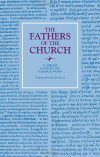
Dogmatic and Polemical Works
- Author: Saint Jerome
- Translator: John N. Hritzu
- Series: Fathers of the Church
- Publisher: Catholic University of America Press
- Publication Date: 1965
- Pages: 422
St. Jerome’s reputation rests primarily on his achievements as a translator and as a scriptural exegete. The important service that he rendered to the Church in his doctrinal works is often overlooked or minimized by those who look for originality and independence of thought. St. Jerome was not a theologian in the strict sense of the word. He was no original thinker, and he never abandoned himself to personal meditation of dogma as St. Augustine did. Although he kept strictly to what he found in tradition, the importance of his doctrinal authority is not thereby lessened.
After spending twelve years of his early life at his native Stridon, he was sent to Rome in the year 359 to finish his literary studies. For the next eight years, from 359 to 367, St. Jerome studied very diligently grammar, the humanities, rhetoric, and dialectics. He also took a passionate interest in the Greek and Latin classics, in the philosophers and poets, and especially in the satirists and comic poets. These studies, it seems, tended not to soften, but to exaggerate the temperament of St. Jerome who was by nature irascible and impulsive, and sensitive to criticism and contradiction. The reading in the satirists and the comic poets developed in him a taste for caricature and a penchant for making damaging allusions. Moreover, the trials before the Roman tribunes, which he attended eagerly, and wherein the advocates indulged in mutual personal invective, further developed in him the art and science of polemics which he was to employ so effectively and skillfully in the controversies which were to engage his attention seriously.
St. Jerome stressed the fact that the Church must always be regarded as the supreme rule and decisive standard of the Christian faith; and that that Church gives the true sense of the Scriptures, and is representative of tradition. It was owing to this firm conviction on the part of St. Jerome that the years of his later life were consumed in endless conflicts with the enemies of the Church. St. Jerome never spared heretics, but always saw it that the enemies of the Church were his own enemies. His encounter with the Sabellians was St. Jerome's first quarrel with an enemy of the Church. He gave notice early in his life that he would be a staunch protector of the doctrinal authority of the Church, and that he stood ready to attack any and all heresies that raised their heads against the Catholic faith.
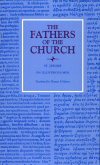
On Illustrious Men
- Author: Saint Jerome
- Translator: Thomas P. Halton
- Series: Fathers of the Church
- Publisher: Catholic University of America Press
- Publication Date: 2000
- Pages: 150
Often cited as a source of biographical information on ancient Christian authors, On Illustrious Men provides St. Jerome’s personal evaluations of his forebears and contemporaries, as well as catalogs of patristic writings known to him. Heterodox writers and certain respected non-Christians (Seneca, Josephus, and Philo) are included in this parade of luminaries, which begins with the apostles and concludes with St. Jerome himself and a list of his own works prior to 393, the year in which On Illustrious Men was composed.
St. Jerome produced this work in his monastery at Bethlehem, to which he had retreated after his precipitous exit from Roman ecclesiastical politics. He had, however, maintained correspondences with several of his former associates, such as Dexter (the son of Pacian, bishop of Barcelona), to whom he addressed the work. Relying heavily on Eusebius’s Ecclesiastical History, St. Jerome attempts to demonstrate the erudition and nobility of character which render Christianity immune to the criticisms of its cultured despisers.
Since this work can be regarded as the patrology textbook of its day, its translator, Thomas P. Halton, has continued St. Jerome’s mission by compiling bibliographical data on recent editions, translations, and studies of ancient writings mentioned in On Illustrious Men. Extensive footnote material and appendices furnish a wealth of information useful for patristic research. In addition, an index to all of the Fathers of the Church volumes published to date, listed by individual authors, appears in this, the hundredth volume of the series.
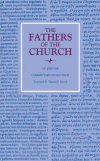
Commentary on Matthew
- Author: Saint Jerome
- Translator: Thomas P. Scheck
- Series: Fathers of the Church
- Publisher: Catholic University of America Press
- Publication Date: 2008
- Pages: 363
St. Jerome (347–420) has been considered the pre-eminent scriptural commentator among the Latin Church Fathers. His Commentary on Matthew, written in 398 and profoundly influential in the West, appears here for the first time in English translation. Jerome covers the entire text of Matthew’s gospel by means of brief explanatory comments that clarify the text literally and historically. Although he himself resided in Palestine for forty years, Jerome often relies on Origen and Josephus for local information and traditions. His stated aim is to offer a streamlined and concise exegesis that avoids excessive spiritual interpretation.
Jerome depends on the works of a series of antecedent commentators, both Greek and Latin, the most important of whom is Origen, yet he avoids the extremes in Origen’s allegorical interpretations. His polemic against theological opponents is a prominent thrust of his exegetical comments. The Arians, the Gnostics, and the Helvidians are among his most important targets. Against Arius, Jerome stresses that the Son did not lack omniscience. Against Marcion and Mani, Jerome holds that Jesus was a real human being, with flesh and bones, and that men become sons of God by their own free choice, not by the nature with which they are born. Against Helvidius, Jerome defends the perpetual virginity of Mary.
In this commentary, Jerome calls attention to the activity of the Trinity as a principal unifying theme of the Gospel of Matthew. He also stresses that exertions are necessary for the Christian to attain eternal salvation; that free will is a reality; that human beings cooperate with divine grace; and that it is possible to obtain merit during the earthly life.
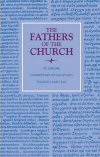
Commentary on Galatians
- Author: Saint Jerome
- Translator: Andrew Cain
- Series: Fathers of the Church
- Publisher: Catholic University of America Press
- Publication Date: 2010
- Pages: 308
Prior to the middle of the fourth century, the exegesis of St. Paul had been monopolized by Greek and Syriac commentators. Then, in the space of half a century (c. 360–409), there appeared no less than 52 commentaries by six different Latin authors. This sudden flurry of literary activity has been dubbed the western “Renaissance of Paul.” Jerome’s commentaries on four Pauline epistles (Galatians, Ephesians, Titus, Philemon), which he composed in 386 shortly after establishing himself in Bethlehem, occupy a central place in this relatively short but prolific segment of the history of Pauline exegesis in Latin.
Jerome was the greatest biblical scholar of the ancient Latin church, and his Commentary on Galatians is one of the crowning achievements of his illustrious career. It far outclasses the five other contemporary Latin commentaries on Galatians in its breadth of classical and patristic erudition, Hebrew and Greek textual criticism of the Bible, and expository thoroughness. It is unique also because it is the only one of the Latin commentaries to make the Greek exegetical tradition its main point of reference. Jerome’s Commentary in fact preserves, in one form or another, a treasure-trove of otherwise lost Greek exegesis, particularly Origen’s Commentary on Galatians, from which he worked very closely when composing his own work.
Jerome’s Commentary on Galatians is presented here in English translation in its entirety. The introduction and notes situate the Commentary in its historical, exegetical, and theological contexts and also provide extensive coverage of ancient and modern scholarly debates about the interpretation of Paul’s epistle.
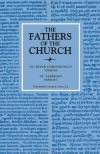
Selected Sermons; Homilies
- Authors: Peter Chrysologus and Valerian
- Translator: George E. Ganss
- Series: Fathers of the Church
- Publisher: Catholic University of America Press
- Publication Date: 1953
- Pages: 454
This volume contains roughly a third of St. Peter Chrysologus’ authentic sermons, now available to an English-speaking audience. The sermons offer readers a glimpse into the daily life, religious debates, political milieu, and Christian belief and practice in the second quarter of fifth-century Ravenna.
Chrysologus preached and served as bishop at a time when the seat of the western Roman Empire was located in Ravenna. His career as bishop bridged the closing years of Augustine’s episcopate in North Africa and the early years of Pope Leo the Great’s pontificate in Rome. His sermons attest to his relations with the ruler of the state, the Empress Galla Placidia, as well as his familiarity with some of the significant theological controversies of the day. His chief importance, however, was not as an outstanding theologian, but as a shepherd who ruled his flock and preached well to its members. Loyally orthodox, he urged them to practice Christian virtues. He was concerned with their moral rectitude and spiritual growth, their understanding of the basic tenets of the Christian faith, their reverence and love for God, and their immersion in the Scriptures.
Chrysologus’s sermons are relatively brief in length, at least according to patristic standards, and he combines colloquial speech with a highly rhetorical flourish. The imagery that he employs indicates how attuned he was to the experiences of his congregation, how enamored he was of the beauty of the countryside or seashore, and how thoroughly imbued he was with the letter and the spirit of the Scriptures.
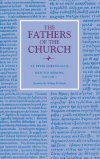
Selected Sermons, vol. 2
- Author: Peter Chrysologus
- Translator: William B. Palardy
- Series: Fathers of the Church
- Publisher: Catholic University of America Press
- Publication Date: 2004
- Pages: 326
In 1953, the Fathers of the Church series published selected sermons of St. Peter Chrysologus (ca. 406-450), Archbishop of Ravenna and Doctor of the Church, thereby making thirty percent of his authentic sermons available to an English-speaking audience. With the publication of this volume all of Chrysologus’s authentic sermons up to number 72 are now available in English. The sermons offer readers a glimpse into the daily life, religious debates, political milieu, and Christian belief and practice in the second quarter of fifth-century Ravenna.
Chrysologus preached and served as bishop at a time when the seat of the western Roman Empire was located in Ravenna. His career as bishop bridged the closing years of Augustine’s episcopate in North Africa and the early years of Pope Leo the Great’s pontificate in Rome. His sermons attest to his relations with the ruler of the state, the Empress Galla Placidia, as well as his familiarity with some of the significant theological controversies of the day. His chief importance, however, was not as an outstanding theologian, but as a shepherd who ruled his flock and preached well to its members. Loyally orthodox, he urged them to practice Christian virtues. He was concerned with their moral rectitude and spiritual growth, their understanding of the basic tenets of the Christian faith, their reverence and love for God, and their immersion in the Scriptures.
Chrysologus’s sermons are relatively brief in length, at least according to patristic standards, and he combines colloquial speech with a highly rhetorical flourish. The imagery that he employs indicates how attuned he was to the experiences of his congregation, how enamored he was of the beauty of the countryside or seashore, and how thoroughly imbued he was with the letter and the spirit of the Scriptures.
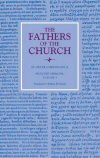
Selected Sermons, vol. 3
- Author: Peter Chrysologus
- Translator: William B. Palardy
- Series: Fathers of the Church
- Publisher: Catholic University of America Press
- Publication Date: 2005
- Pages: 390
This volume is the third in the Fathers of the Church series to make available selected sermons of St. Peter Chrysologus (ca. 406–450), Archbishop of Ravenna and Doctor of the Church.
A gifted homilist, Chrysologus manifested great reverence for the Scriptures as divine communication and made them accessible to his congregation. Making use of imagery drawn from Ravenna’s natural surroundings as well as from some of the professions occupied by members of his flock, Chrysologus explained orthodox doctrine and promoted spiritual development. The Gospels occupy the foreground in most of his sermons, yet Chrysologus allows the reader a glimpse of the daily life, religious debates, political milieu, and Christian belief and practice in mid-fifth-century Ravenna.
In this volume are several expositions of St. Paul’s letters and some sermons delivered on the feast days of saints and at the consecrations of new bishops. Most of the selections, however, are homilies on texts from the four Gospels that Chrysologus interpreted throughout the year. Of particular note is his preaching on specific liturgical seasons—the end of Lent, Easter, Pentecost, the period immediately prior to Christmas, and the Christmas and Epiphany cycle.
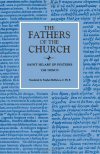
The Trinity
- Author: Hilary of Poitiers
- Translator: Stephen McKenna
- Series: Fathers of the Church
- Publisher: Catholic University of America Press
- Publication Date: 1954
- Pages: 574
Named Doctor of the Church by Pope Pius IX, St. Hilary was a gifted orator, a zealous Christian philosopher, and a defender of orthodoxy. He often did theological battle with the Anomoeans and the Semi-Arians, and traveled across Europe to bring the local bishops out of the hold of Arianism. Here, twelve books on the Trinity by St. Hilary are compiled, bringing his throughts together on the deity, sonship, and interrelationship of God.
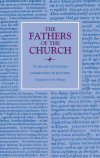
Commentary on Matthew
- Author: Hilary of Poitiers
- Translator: D. H. Williams
- Series: Fathers of the Church
- Publisher: Catholic University of America Press
- Publication Date: 2012
- Pages: 324
When the writing of Latin biblical commentaries was still in its infancy, a young bishop from Poitiers, in Gaul, penned a passage-by-passage exposition on the Gospel of Matthew. It is the first of its kind to have survived almost completely intact. Published now for the first time in English translation, Hilary’s commentary offers a close look at Latin theology and exegesis before the Nicene Creed was considered the sole standard of orthodoxy.
Likely the earliest of Hilary’s writings, this commentary has none of the polemic against the “Arians” that figured so prominently in most of his later works. Nonetheless, there exists in this text an oft-stated concern with those who interpreted the Incarnation as grounds for construing Christ as only a man rather than professing Christ as God and man.
Other noteworthy features of the commentary include Hilary’s interest in the relation between Law and Gospel and his articulation of a Pauline-based view of justification by faith. In his view, the importance of the Law before the Gospel was indisputable and necessary. For Jews, it was considered the way of redemption. With the advent of Christ, it became an eschatological guide directing all future believers into the grace that comes by faith. Hilary’s emphasis on God’s righteousness conferred on a helpless race represents a far more pronounced application of Paul’s thought than in any previous Latin writer.
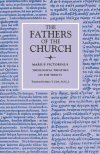
Theological Treatises on the Trinity
- Author: Marius Victorinus
- Translator: Mary T. Clark
- Series: Fathers of the Church
- Publisher: Catholic University of America Press
- Publication Date: 1981
- Pages: 384
Marius Victorinus, a contemporary of St. Ambrose and one who had considerable influence on St. Augustine—he has been styled “an Augustine before Augustine”—is an important fourth-century Neoplatonist. Before his conversion to Christianity Marius Victorinus wrote commentaries on works of Cicero and translated Aristotle’s tracts on logic and some Neoplatonic books into Latin.
After his conversion, probably AD 354, he turned his vast learning to the composition of theological treatises in refutation of Arianism and the errors of Ursacius and Valens expressed in the Creed of Sirminum (357) as well as those of Basil of Ancyra and of the Homoeans in the credos of Sirmium and Rimini in 359.
The Theological Treatises on the Trinity contain the following: two letters, one from Candidus the Arian to the Rhetor Marius Victrorinus and the addressee’s reply. Both documents are quite probably literary devices helping to bring into sharp focus the matters under discussion. These are followed by four books Against Arius, a short treatise demonstrating the necessity of accepting the term homoousios (of the same substance), and three Hymns, mostly in strophic structure, addressed to the Trinity and explaining the names and functions of the divine Persons in salvation history. In the Treatises, Marius Victorinus adopts, in addition to the then traditional arguments, Neoplatonic concepts—adapted probably from Porphyry—to present a systematic explanation of the Trinity. Posthumous influences of the Treatises are discernible in works of Alcuin.
The present translation is made from the latest critical text and has profited greatly from the vast erudition of Pierre Henry and Paul Hadot.
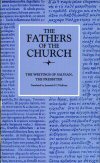
The Writings of Salvian, the Presbyter
- Author: Salvian
- Translator: Jeremiah F. O’Sullivan
- Series: Fathers of the Church
- Publisher: Catholic University of America Press
- Publication Date: 1947
- Pages: 396
These insightful writings of Salvan contain his letters, The Governance of God, and The Four Books of Timothy to the Church. Each of these reflect his dissatisfaction with public policy and law, his thoughts on theology and polity, and his relationships with friends and family in the context of Christian vocations.
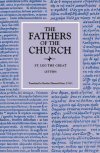
Letters
- Author: Pope Leo the Great
- Translator: Edmund Hunt
- Series: Fathers of the Church
- Publisher: Catholic University of America Press
- Publication Date: 1957
- Pages: 312
As the vestiges of the Roman political machine began to collapse in the fifth century AD, the towering figure of Pope St. Leo the Great came into relief amid the rubble. Sustained by an immutable doctrine transcending institutions and cultures, the Church alone emerged from the chaos. Eventually, the Roman heritage became assimilated into Christianity and ceased to have a life of its own. It would be practically impossible to understand this monumental transition from Roman world to Christendom without taking into account the pivotal role played by Leo—and not the emperor—who went out to confront Attila and Hun. It was Leo who once averted and on another occasion mitigated the ravages of barbarian incursions.
As significant as his contribution was to history, Leo had an even greater impact on theology. When partisans of the monophysite heresy had through various machinations predetermined the outcome of a council held at Ephesus in 450, Leo immediately denounced it as a latrocinium (robbery) rather than a concilium (council). A year later—with cries of “Peter has spoken through Leo!”—the ecumenical Council of Chalcedon, a pillar of Catholic Christianity, adopted in its resounding condemnation of monophysitism the very language formulated by Leo. Pope Leo also developed the most explicit and detailed affirmations known up to that time of the prerogatives enjoyed by successors if St. Peter. Many theological principles find their clearest, and certainly their most eloquent, expression in his sermons.
Leo spoke with all the refinement of a Roman orator, without the pagan trappings, and thus epitomized a Christian appropriation of the classical heritage. In the midst of it all, however, Pope St. Leo thought of himself simply as the humble servant of those entrusted to his care.
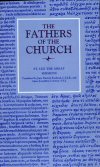
Sermons
- Author: Pope Leo the Great
- Translator: Jane Patricia Freeland
- Series: Fathers of the Church
- Publisher: Catholic University of America Press
- Publication Date: 1996
- Pages: 448
As the vestiges of the Roman political machine began to collapse in the fifth century AD, the towering figure of Pope St. Leo the Great came into relief amid the rubble. Sustained by an immutable doctrine transcending institutions and cultures, the Church alone emerged from the chaos. Eventually, the Roman heritage became assimilated into Christianity and ceased to have a life of its own. It would be practically impossible to understand this monumental transition from Roman world to Christendom without taking into account the pivotal role played by Leo—and not the emperor—who went out to confront Attila and Hun. It was Leo who once averted and on another occasion mitigated the ravages of barbarian incursions.
As significant as his contribution was to history, Leo had an even greater impact on theology. When partisans of the monophysite heresy had through various machinations predetermined the outcome of a council held at Ephesus in 450, Leo immediately denounced it as a latrocinium (robbery) rather than a concilium (council). A year later—with cries of “Peter has spoken through Leo!”—the ecumenical Council of Chalcedon, a pillar of Catholic Christianity, adopted in its resounding condemnation of monophysitism the very language formulated by Leo. Pope Leo also developed the most explicit and detailed affirmations known up to that time of the prerogatives enjoyed by successors if St. Peter. Many theological principles find their clearest, and certainly their most eloquent, expression in his sermons.
Leo spoke with all the refinement of a Roman orator, without the pagan trappings, and thus epitomized a Christian appropriation of the classical heritage. In the midst of it all, however, Pope St. Leo thought of himself simply as the humble servant of those entrusted to his care. This volume presents the first English translation of the complete Sermons.
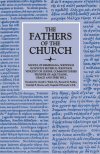
Writings; Commonitories; Grace and Free Will
- Authors: Saint Nicetas, Sulpicius Severus, Vincent of Lerins, and Prosper of Aquitane
- Translator: Gerald G. Walsh
- Series: Fathers of the Church
- Publisher: Catholic University of America Press
- Publication Date: 1949
- Pages: 443
For centuries, the writings of St. Nicetas, bishop of Remesiana were mistakenly attributed to others who share similar names with him. Now, for the first time, the writings of St. Nicetas have been gathered together in the same volume and made available in English, allowing readers to inspect closely his ecclesiastical writings and poetry. Throughout his writings, there are clues that point to his contribution to the Catholic Church as a whole—such as the similarities in his poems to the Te Deum, and his writings on early catechetical instruction.
This volume also contains the letters, Dialogues, and the Life of Saint Martin, Bishop and Confessor by Sulpicius Severus; The Commonitories of Vincent of Lerins; and the Grace and Free Will of St. Tiro Prosper of Aquitaine.
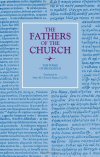
Poems, vol. 1
- Author: Prudentius
- Translator: M. Clement Eagan
- Series: Fathers of the Church
- Publisher: Catholic University of America Press
- Publication Date: 1962
- Pages: 311
Prudentius, often acclaimed as the greatest Latin Christian poet, was born probably in Calahorra, Spain, the son of highly cultured Roman citizens and fervent Christians. His death occurred after 405. The metric structure of his poems clearly shows the great influence of Horace although echoes of other Latin poets are likewise detected.
The Book of Hymns for Every Day (Liber Cathemerinon) is a collection of hymns for use at times of prayer that were once customary in the early Church: at cock-crow, morning hymn, hymns before and after repast, hymn at time of lamp lighting, hymn before sleep. Hymns to be used for special feasts and occasions conclude the work.
The Book of the Martyrs’ Crowns (Liber Peristephanon) is a work that comprises fourteen hymns in honor of various martyrs. Six hymns honor the Spanish martyrs: Emeterius, Chelidonius, Eulalia, the Eighteen Martyrs of Saragossa, Vincent, Fructuosus and companions. Five hymns sing the praises of Roman martyrs: Lawrence, Cassian, Hippolytus, Peter and Paul, Agnes. Three more hymns honoring the memory of Quirinus, Romanus and Cyprian conclude this work. The accounts of the martyrdom of Sts. Emetrius, Chelidonius, Lawrence, Eulalia, Cassian, Romanus, Hippolytus, the Eighteen Martyrs of Saragossa are the earliest extant.

Poems, vol. 2
- Author: Prudentius
- Translator: M. Clement Eagan
- Series: Fathers of the Church
- Publisher: Catholic University of America Press
- Publication Date: 1965
- Pages: 234
It cannot be said that poetry, in a literary sense, truly prospered in Christian surroundings. However, the greatest of the Latin Christian poets was the present author, who was born in any one of the three cities: Tarragona, Saragossa, and Calahorra. Modern scholarship favors Calahorra.
Any estimate of Prudentius must include a recognition of certain defects in his works, notably the length and prolixity of his hymns, the crude realism in his descriptions of the torments of the martyrs, the long declamatory speeches, the unreality of his allegory, and his excessive use of alliteration and assonance. Though his writings as a whole cannot be ranked among those of the great poetry in many instances. Prudentius has a technical skill surpassing that of the other Christian Latin poets. He is the creator of the Christian ode and the Christian allegory. He has something of the epic power of Virgil and the lyric beauty and variety of Horace.
Prudentius has still greater claims to greatness, however, in the Christian thought and inspiration of his poetry. A recent critic has declared with truth that Prudentius is “first a Catholic and only in the second place a poet.” His faith is that of the Nicene Creed.
In his poetry, Prudentius celebrates the triumph of Christianity over paganism. He saw the Church emerging from its three-hundred-year struggle against the forces if idolatry and heresy, triumphant through its saving doctrine and the blood of its martyrs. He saw the magnificent basilicas, both in Spain and in Rome, rising in the place of the pagan temples. As an historian of Christian thought and culture at the end of the fourth century, Prudentius cannot be overestimated.
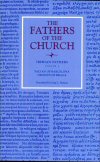
Iberian Fathers, vol. 3: Pacian of Barcelona, Orosius of Braga
- Authors: Pacian of Barcelona and Orosius of Braga
- Translator: Craig L. Hanson
- Series: Fathers of the Church
- Publisher: Catholic University of America Press
- Publication Date: 1999
- Pages: 192
In recent years historians and theologians have focused considerable attention on the church of late antiquity. The Constantinian revolution of the early fourth century produced changes that would affect profoundly and permanently the fabric of traditional Greco-Roman society and early Christian spiritual life. This volume—the third of the works of the Iberian Fathers in the Fathers of the Church series—brings together writings from Pacian of Barcelona and Orosius of Braga, two notable Iberian authors and orthodox partisans of the turbulent late fourth and early fifth centuries.
Pacian, bishop of Barcelona, was renowned in his own day for both his active ministry and his literary talents. Admired by St. Jerome as an author “of restrained eloquence,” Pacian produced several works, ranging from his correspondence with the Novatianist Sympronian to his thoughtful treatises on penance and baptism. Orosius, priest of Braga, was once considered noteworthy principally for his authorship of the universalist Seven Books of History against the Pagans and his student/mentor relationships with St. Augustine of Hippo and St. Jerome. But, in addition, in the two treatises translated here he furnishes mush insight into the contemporary heretical movements in Spain and the course of Peligian controversy.
Included in this volume are Pacian’s three letters to the Novatianist Sympronian, his tract on repentance and the rite of penance (On Penitents), and his sermon concerning baptism (On Baptism). Orosius’s works included the Inquiry or Memorandum to Augustine on the Error of the Priscilliantists and Origenists and the apologetic Book in Defense against the Pelagians. Extensive notes and helpful introductions offer readers further guidance and detail.
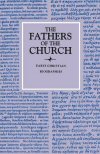
Early Christian Biographies
- Author: Pontius
- Translator: Roy J. Deferrari
- Series: Fathers of the Church
- Publisher: Catholic University of America Press
- Publication Date: 1952
- Pages: 421
Most readers are quite likely to have some basic information about St. Cyprian (d. 258), St. Ambrose (ca. 339–397) and St. Augustine (354–430). Fewer readers are likely to be equally informed about St. Anthony (251?–356), St. Paul the Hermit (d. ca. 340), St. Hilarion (ca. 291–371) and St. Epiphanius (438/439–496/497). Perhaps hardly any reader is acquainted with the holy monk Malchus, presumably a contemporary of St. Jerome (ca. 342–420) and son of a tenant farmer near Nisbis.
Most of the saints’ lives presented here, though the volume is entitled Early Christian Biographies, belong in reality to quite another category, hagiography. The primary requisite of this genre is to serve a religious purpose: edification. Herein hagiography differs considerably from a modern critical biography which demands historically verifiable events and accounts. Nevertheless the account of Malchus, as it is presented in this volume, is unique. St. Jerome writes: “Drawn by curiosity I approached the man and inquired with eager interest if there were any truth in what I had heard. He related the following story” (p. 288). If we may take St. Jerome at his word, the Life of Malchus could well be an autobiography. In any event, many generations have come to look upon these accounts as classics.
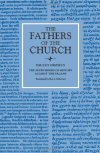
The Seven Books of History Against the Pagans
- Author: Paulus Orosius
- Translator: Roy J. Deferrari
- Series: Fathers of the Church
- Publisher: Catholic University of America Press
- Publication Date: 1964
- Pages: 435
Orosius wrote the first Christian Universal History, “Historiarum adversus paganos libri septem.” It has been thought to be a supplement to the “City of God,” “Civitate Dei,” especially the third book, in which St. Augustine attempts to prove that the Roman Empire suffered as many disasters before as after Christianity was received. It was a common argument among the pagans that the abandonment of the worship of their deities had led to the general break-up of the Roman Empire and all its attendant evils. St. Augustine was annoyed by the persistence of this argument and hoped that a history of all the known people of antiquity, with the fundamental idea in mind that God determines the destinies of nations, would put an end to that pagan thinking.
St. Augustine called upon his young friend Orosius to do this work. Added interest is attached to Orosius’ History by reason of his think link with St. Augustine. The great St. Augustine, in his declining years, requested the youthful and far less gifted Orosius to perform a most important task.
From the point of view of the modern historian and his scientific method, Orosius’ work does not rate very high. The work completed in 418 shows sign of haste. In addition to Holy Scripture and the chronicle of Eusebius revised by St. Jerome, Orosius used Livy, Eutropius, Caesar, Suetonius, Florus, and Justin as sources. All the calamities suffered by the various peoples are described often with annoying monotony. Yet the work is valuable as history, containing as it does contemporary information on the period after 278 AD. It was used widely during the Middle Ages, and the existence today of nearly 200 manuscript copies is evidence of its past popularity.
Reviews
13 ratings

William A. Long
8/10/2018

Ben T
6/20/2018
This series of new translations of the church fathers is from a wide variety of different translators. Each volume has a substantive scholarly introduction to the author/work. These editions are not public domain like the Schaff set but modern, scholarly translations and this is a much better price than the hard backs. Still expensive as a set but you don't have to get them as a set. Just buy them individually like you do normal books... get them as you need them, which is what I do. Better yet, don't take my word for it, just get a single volume and dive into Eusebius, Jerome, Augustine or another church father and see what you think.
Nicholas A. B. Hall
11/8/2017
It would be nice to see an update to this series. The "Mediaeval Continuation " would be nice too.
Ralph A. Abernethy III
9/7/2017
James
12/3/2016
Ray Mills
2/25/2016

Troy Corfield
12/6/2015

Larry Liddiard
9/26/2015
Stephen Quam
6/2/2015
Beh
2/4/2015